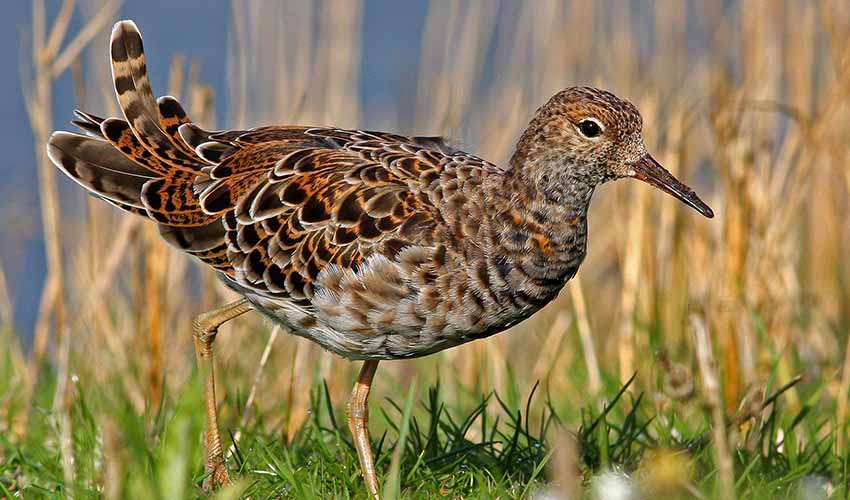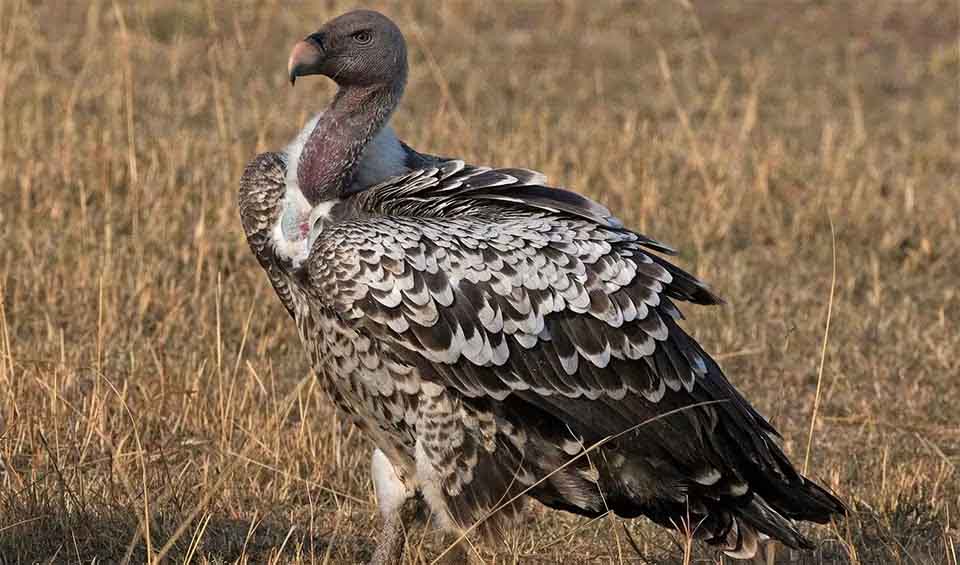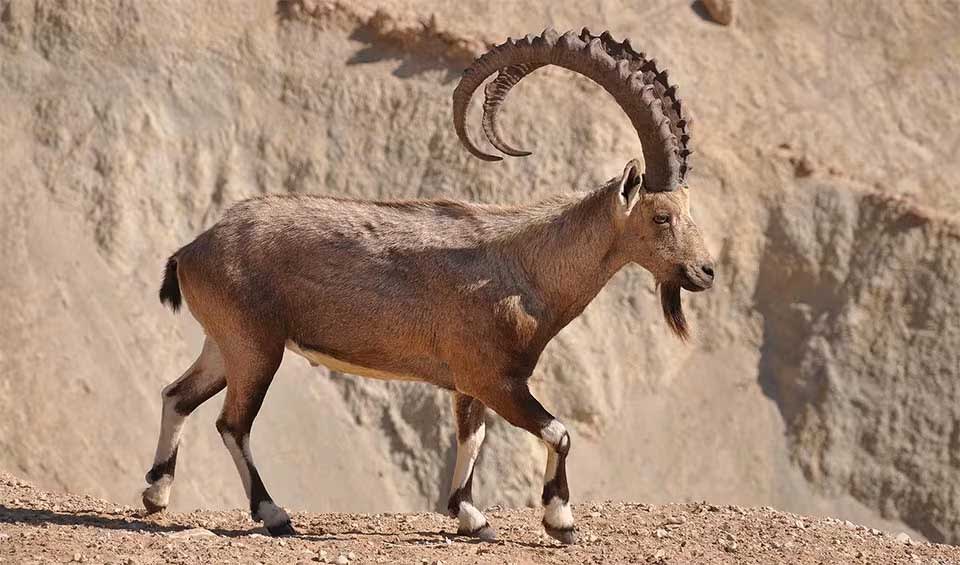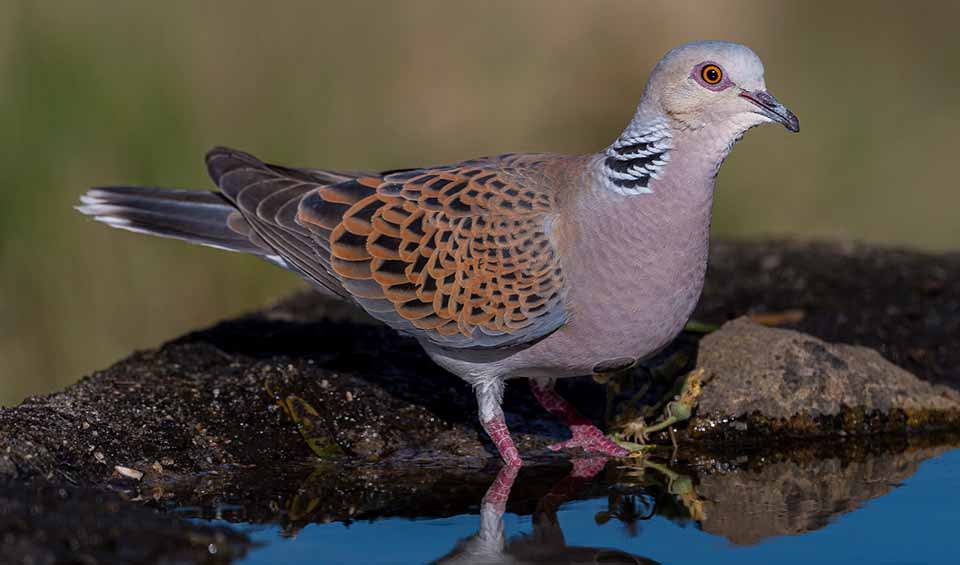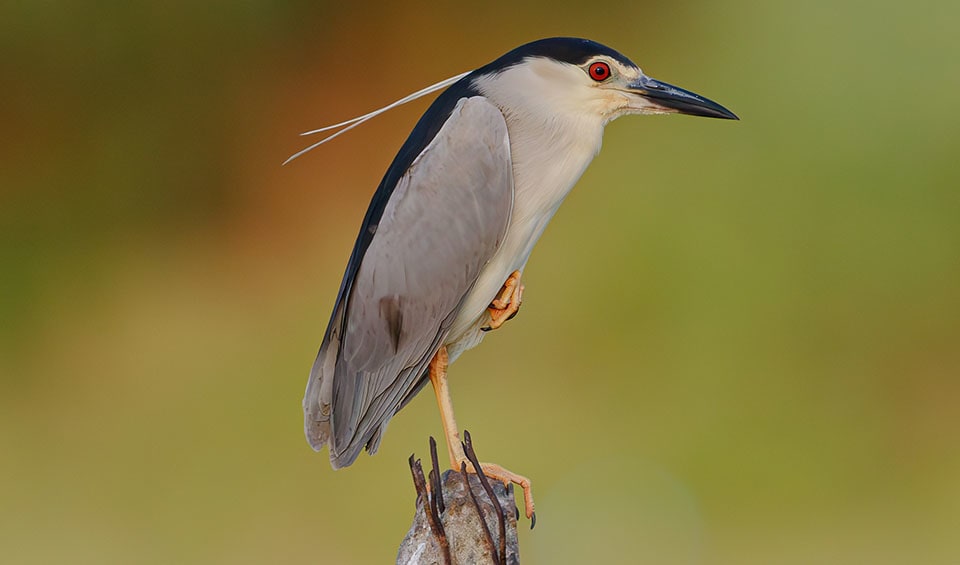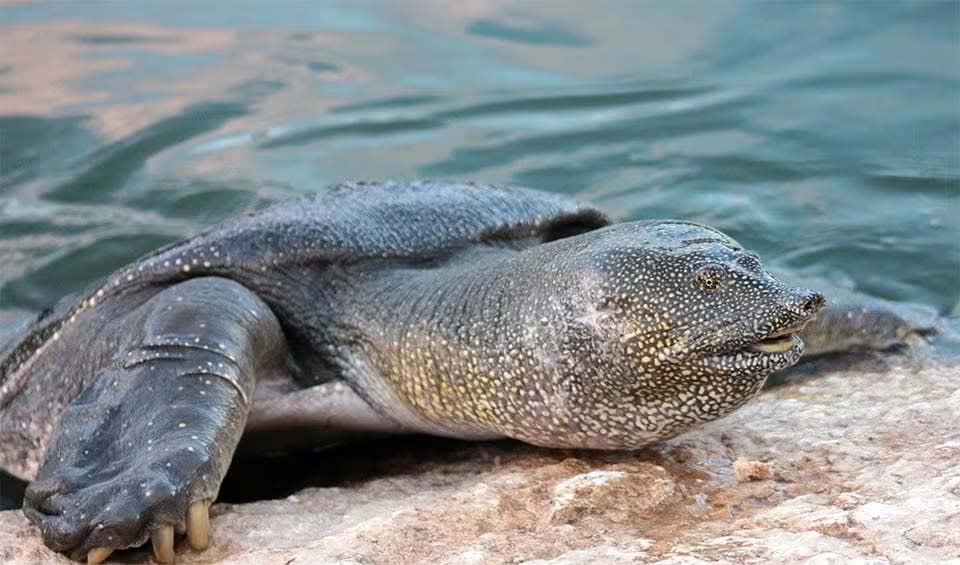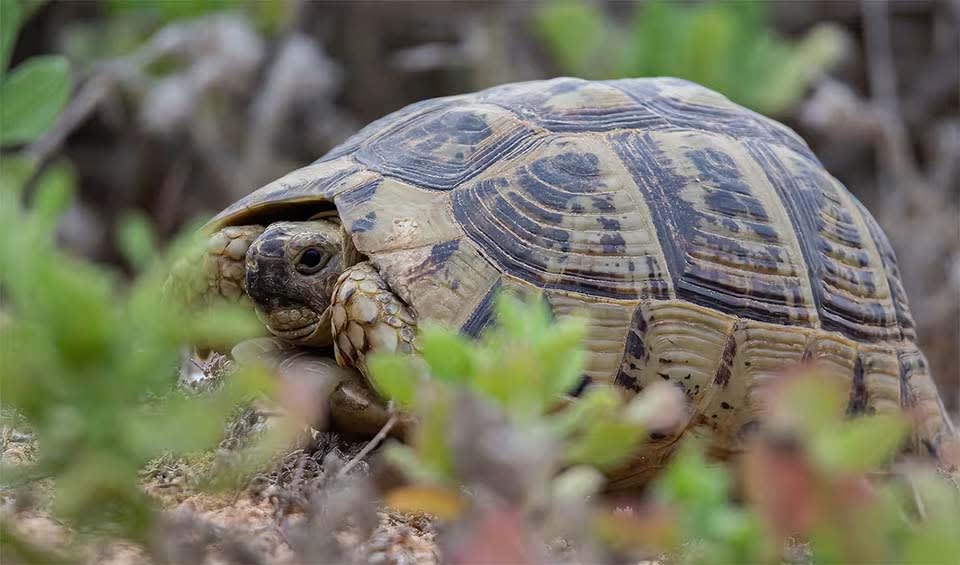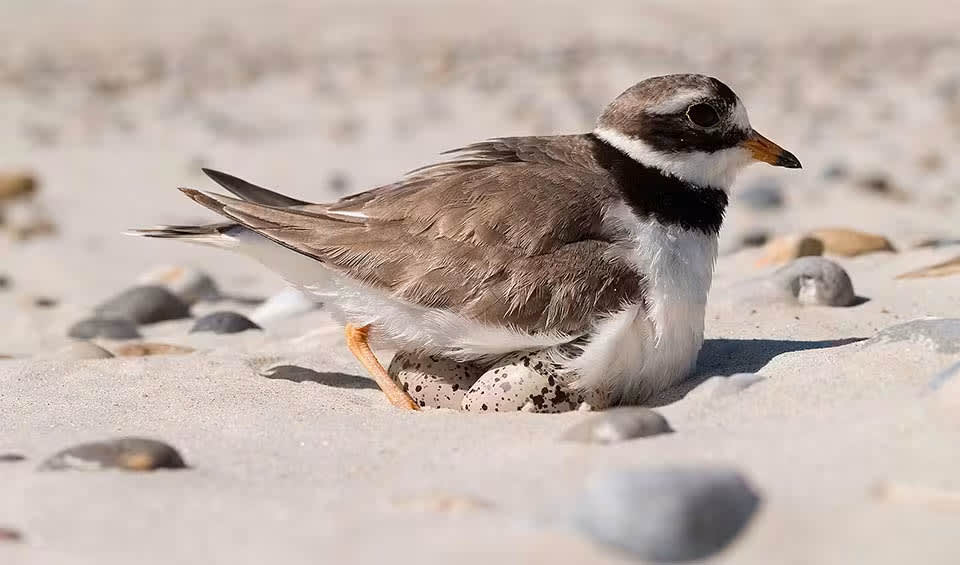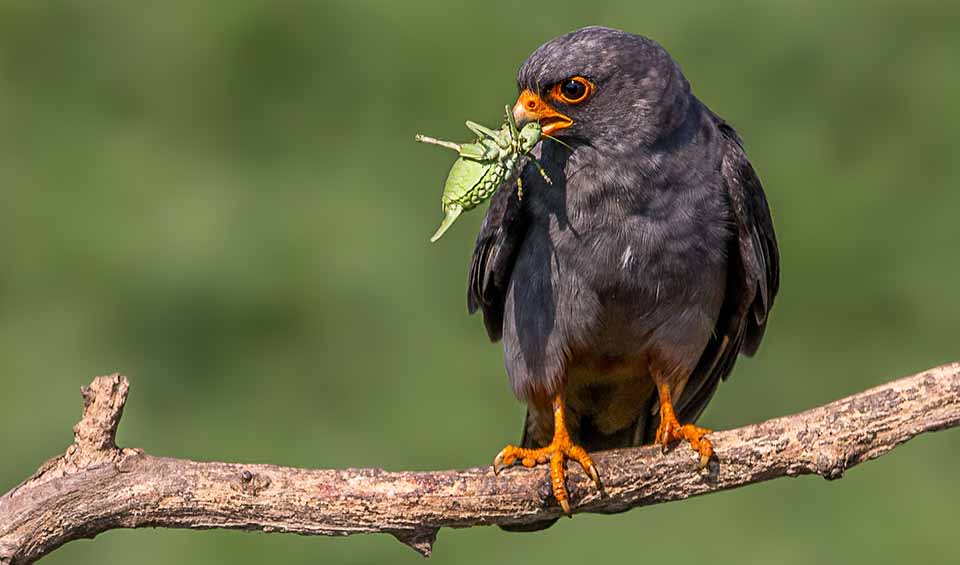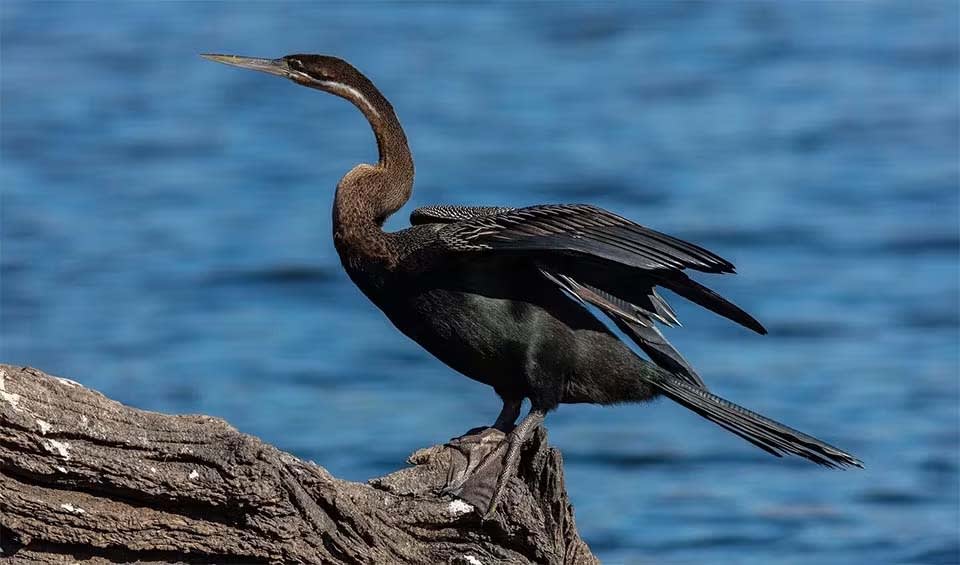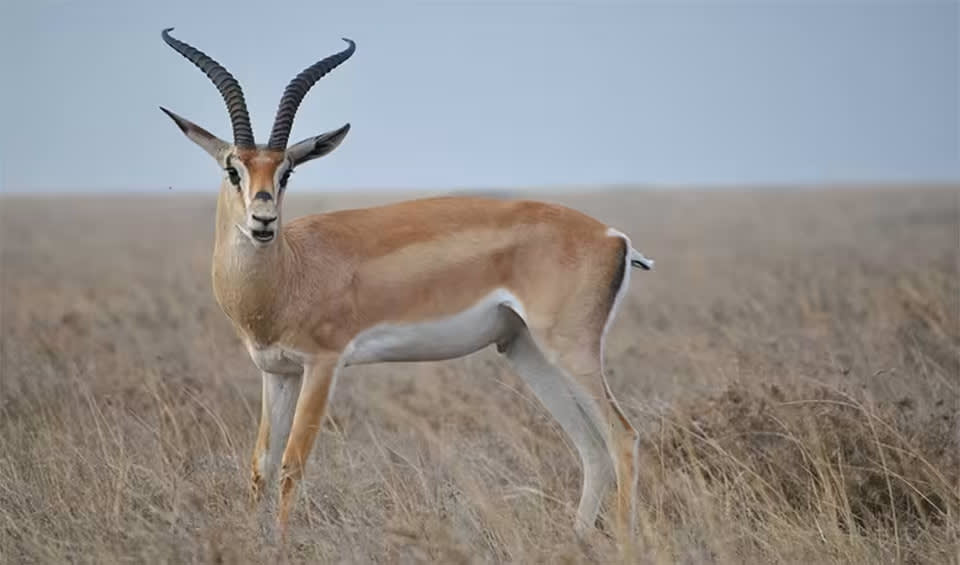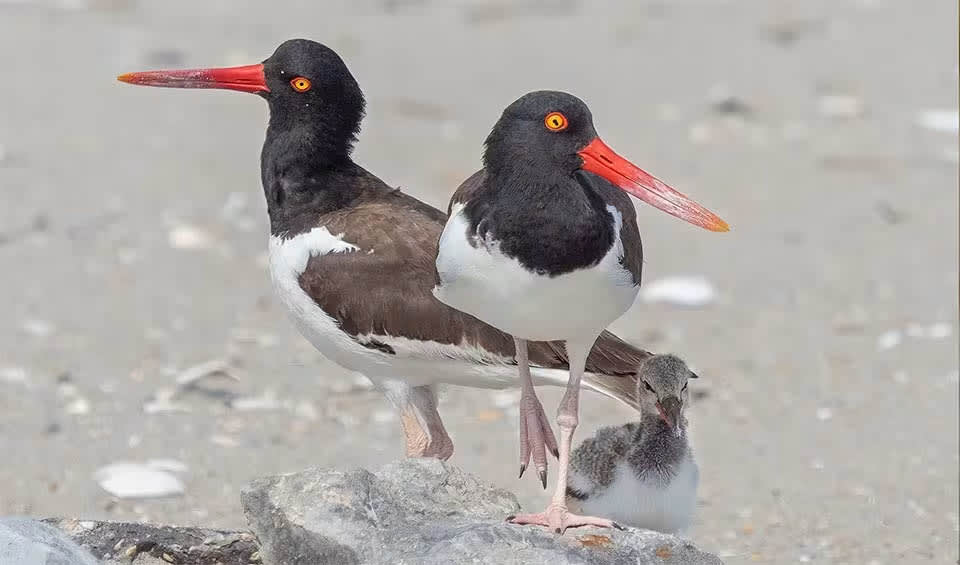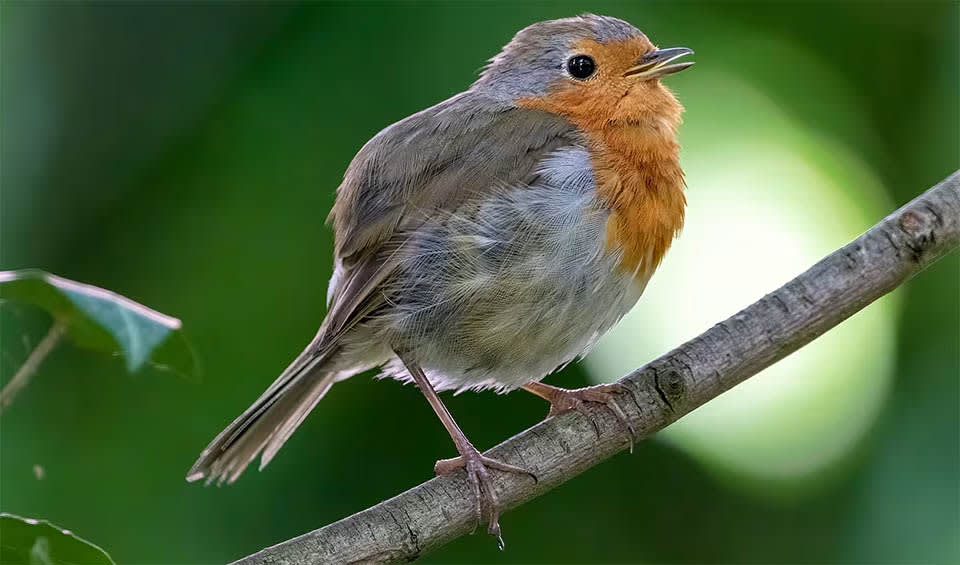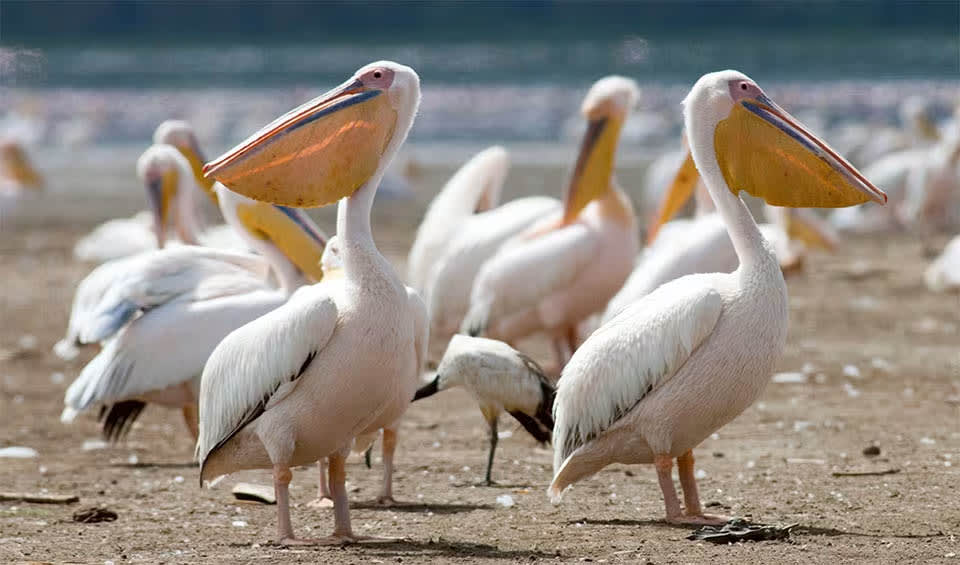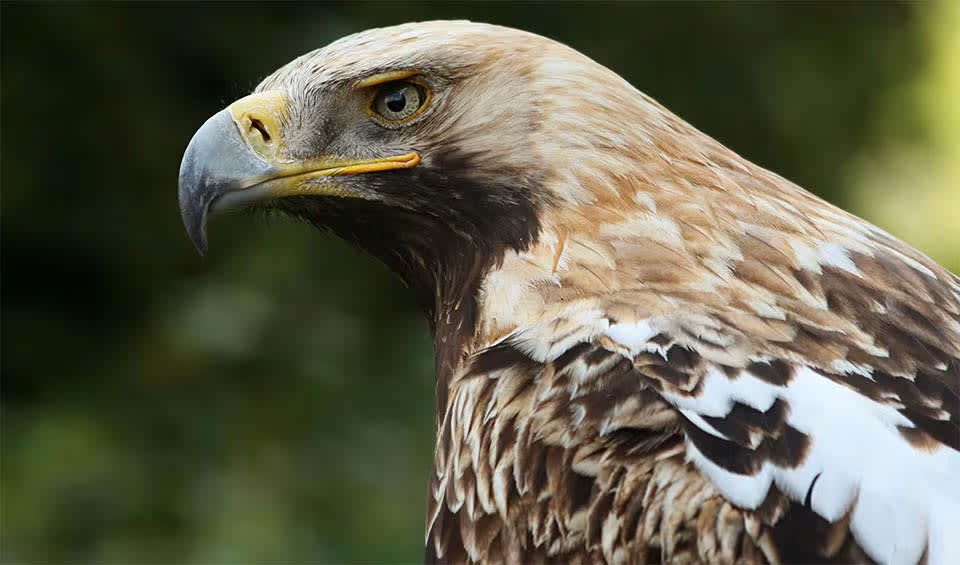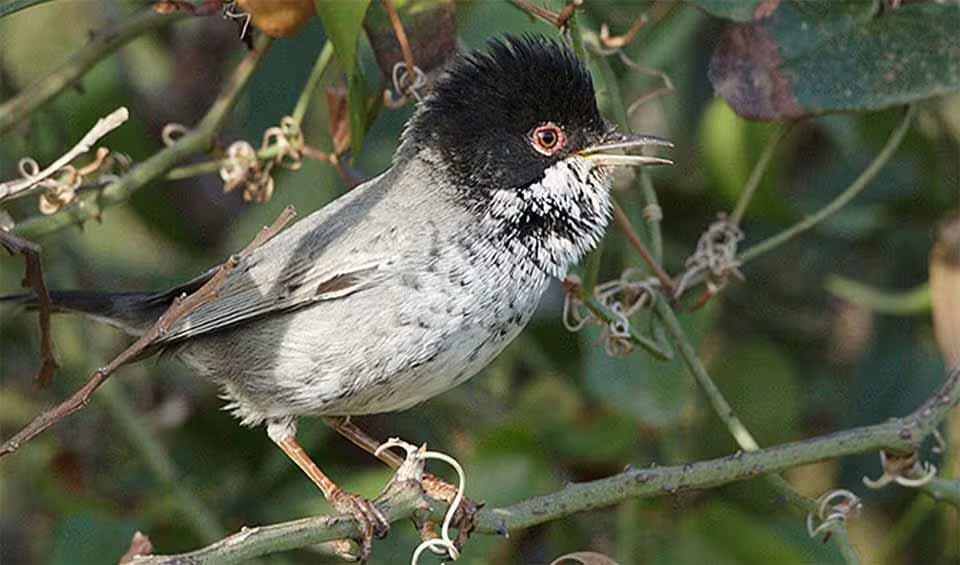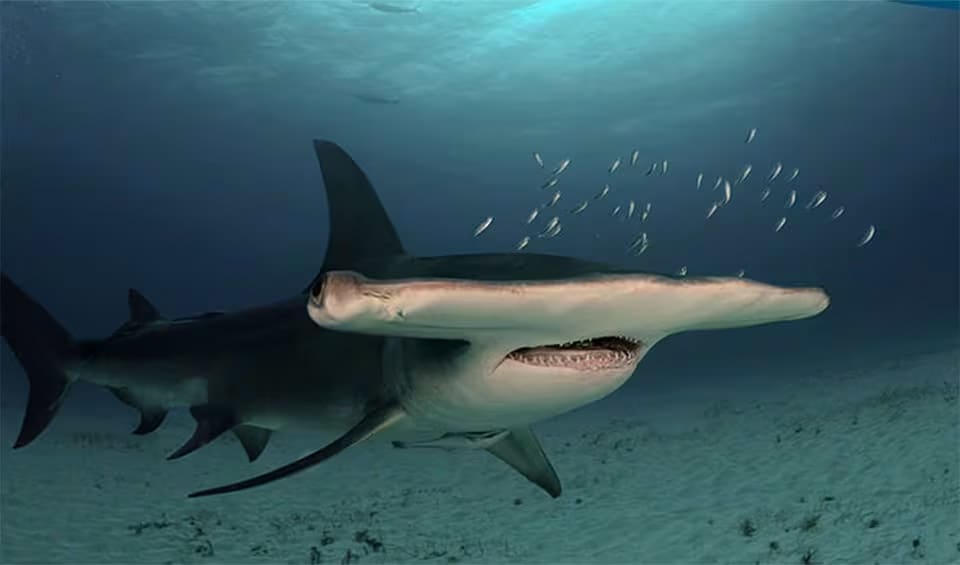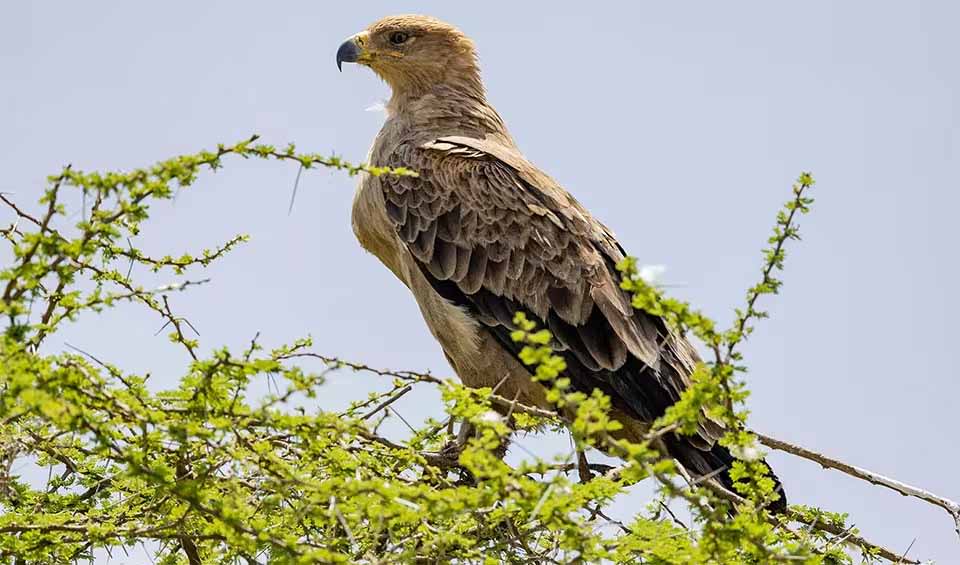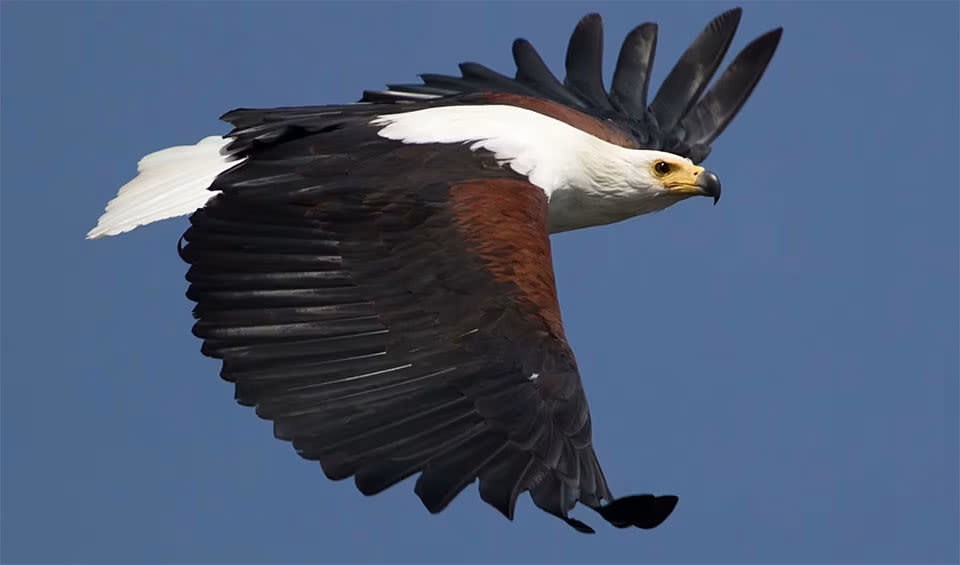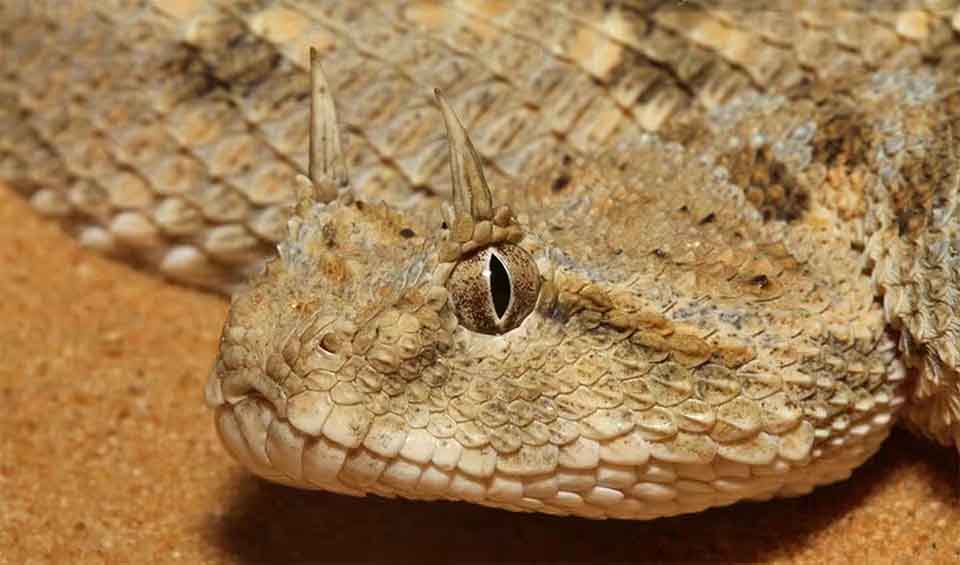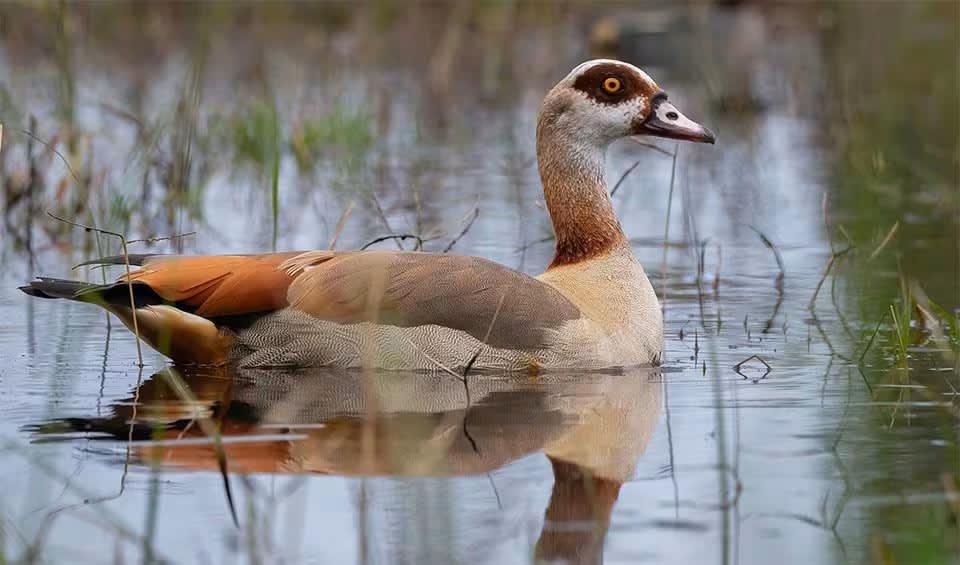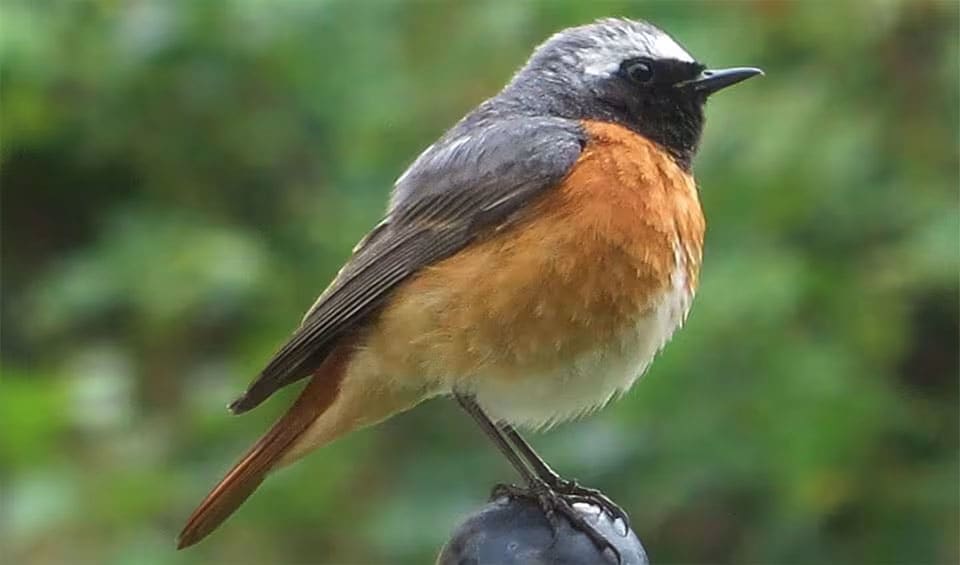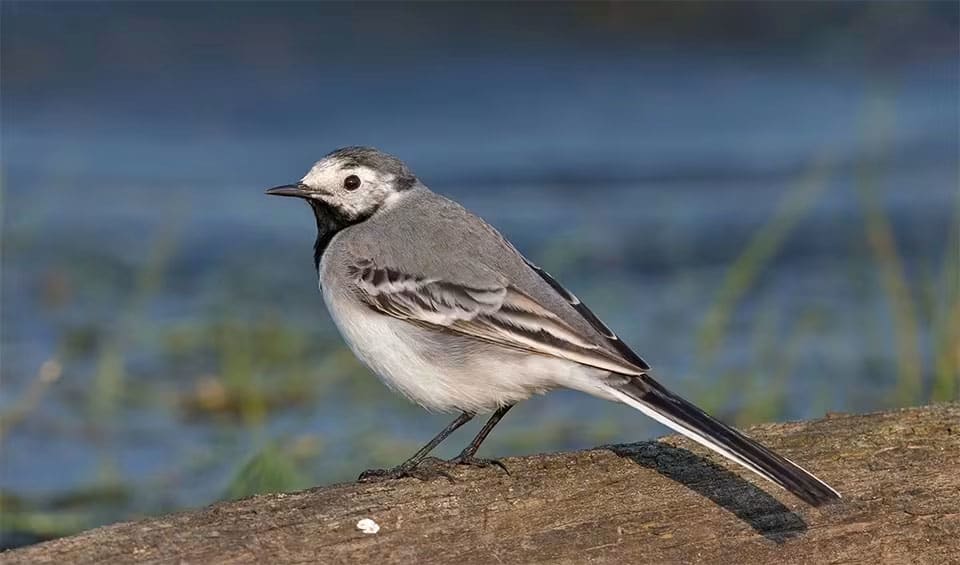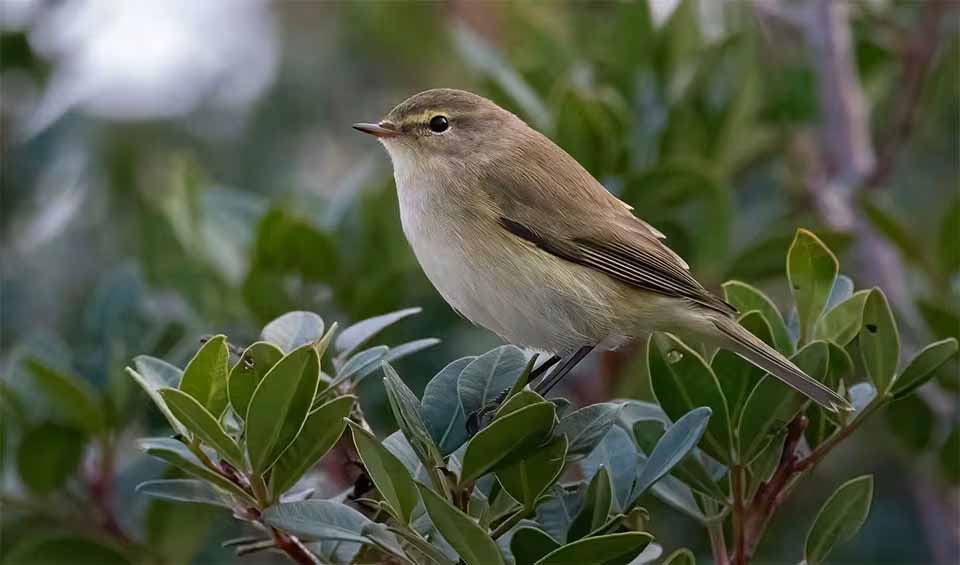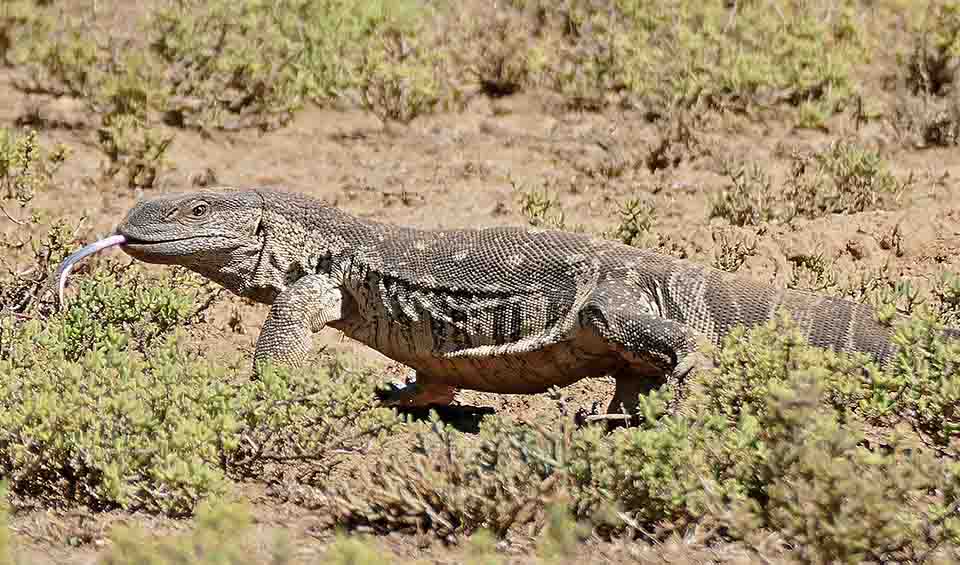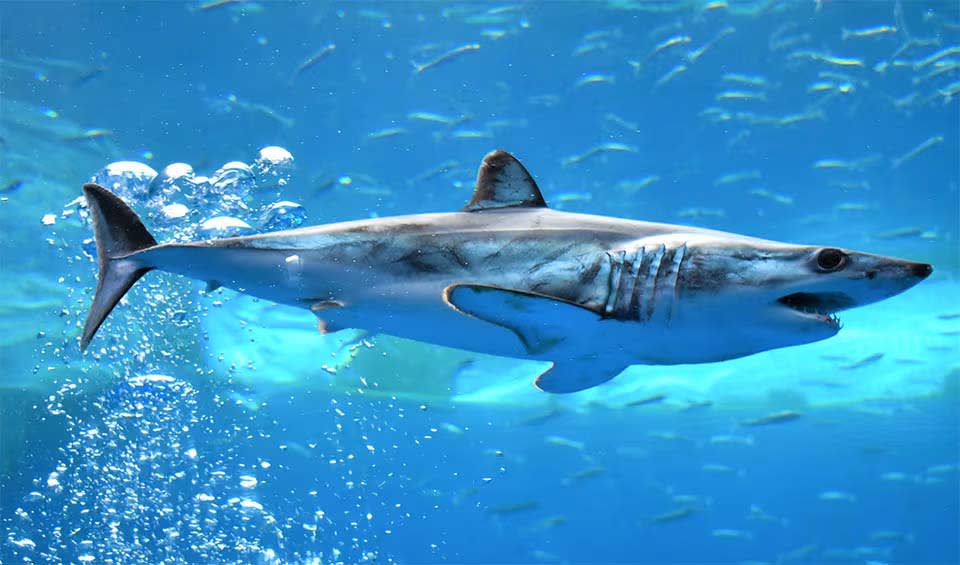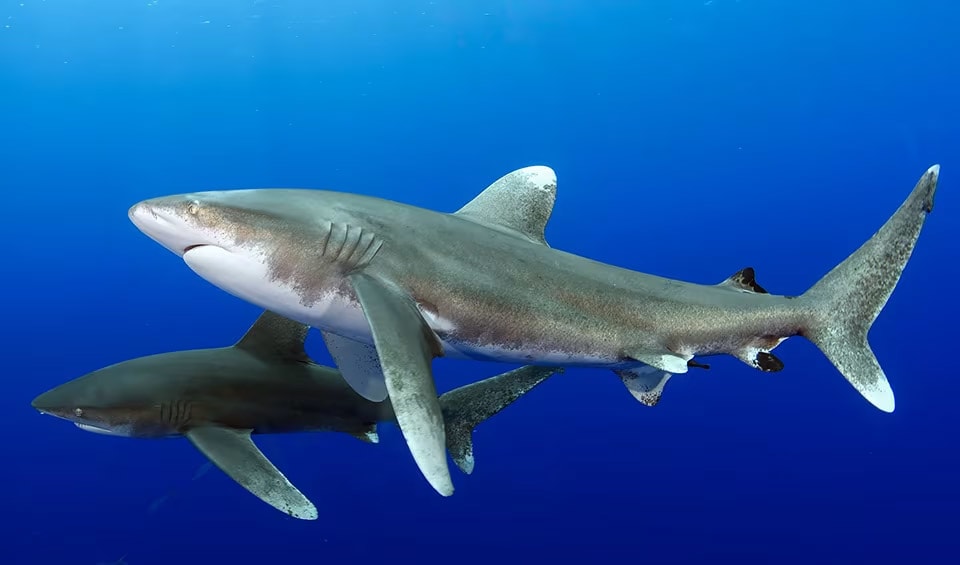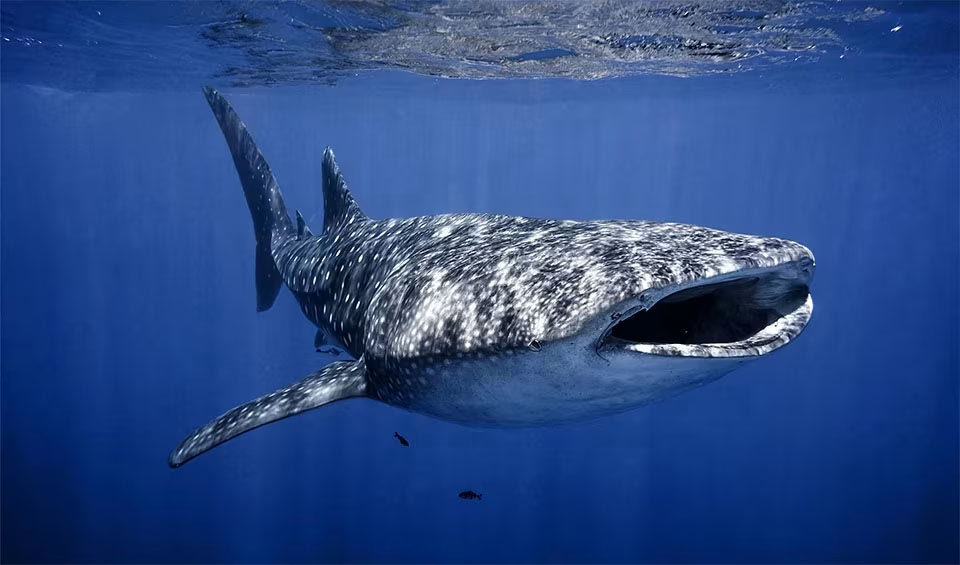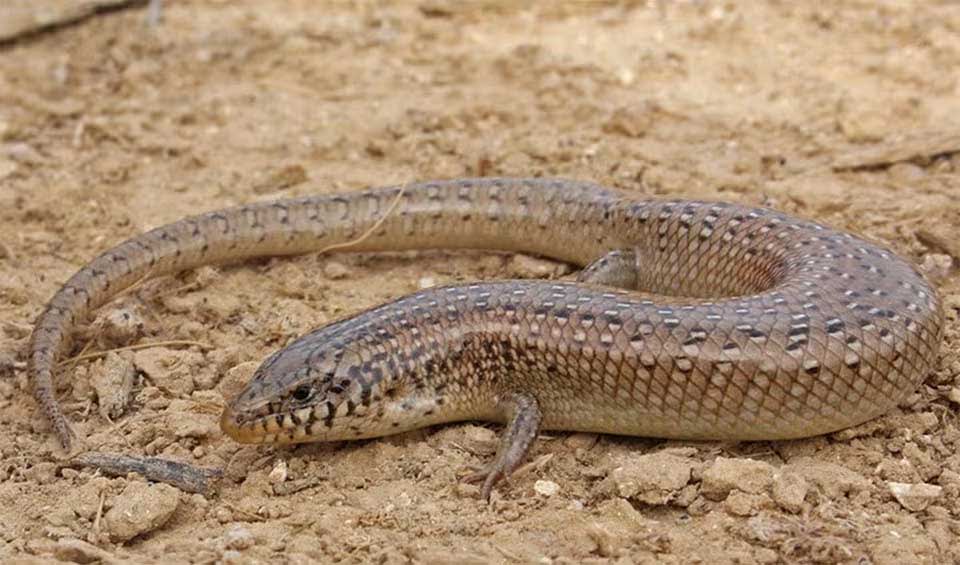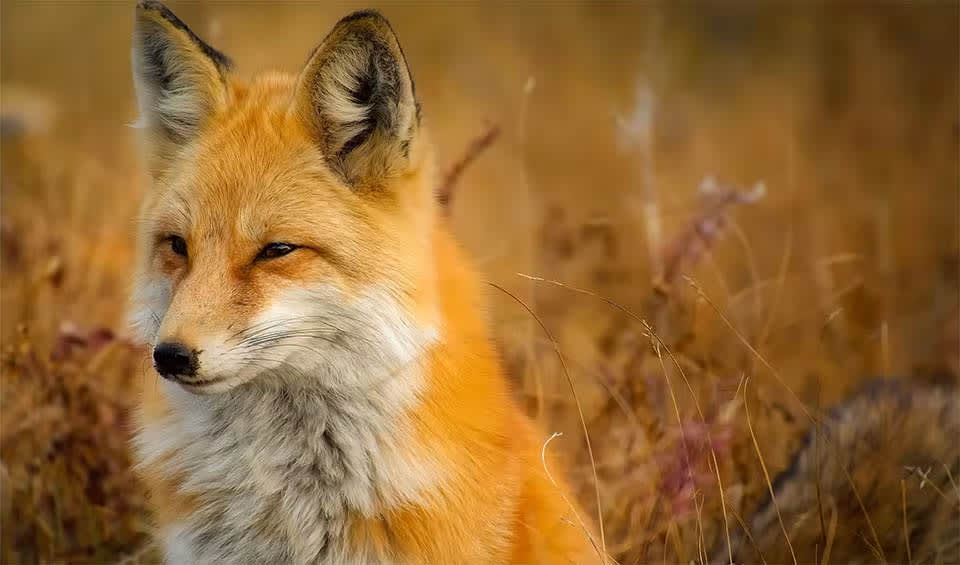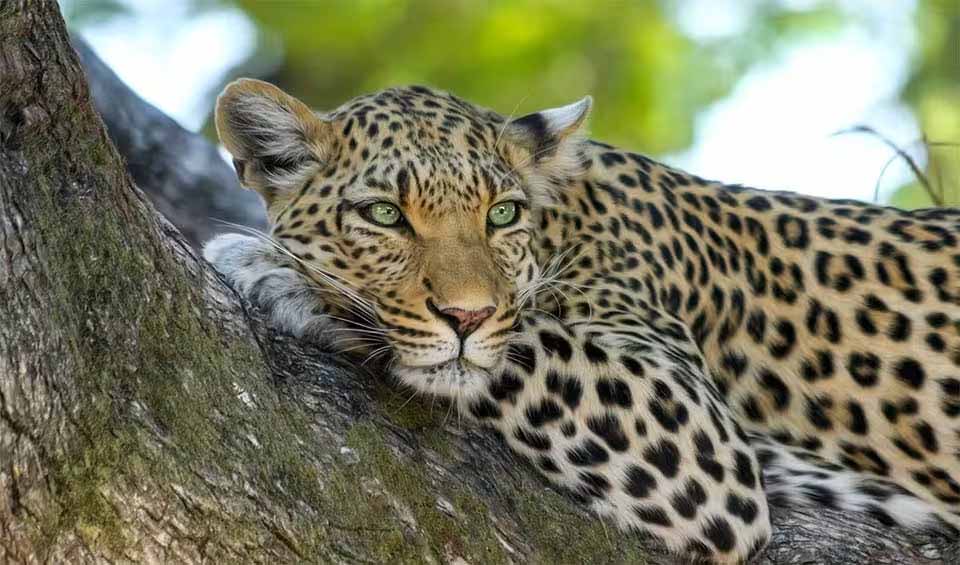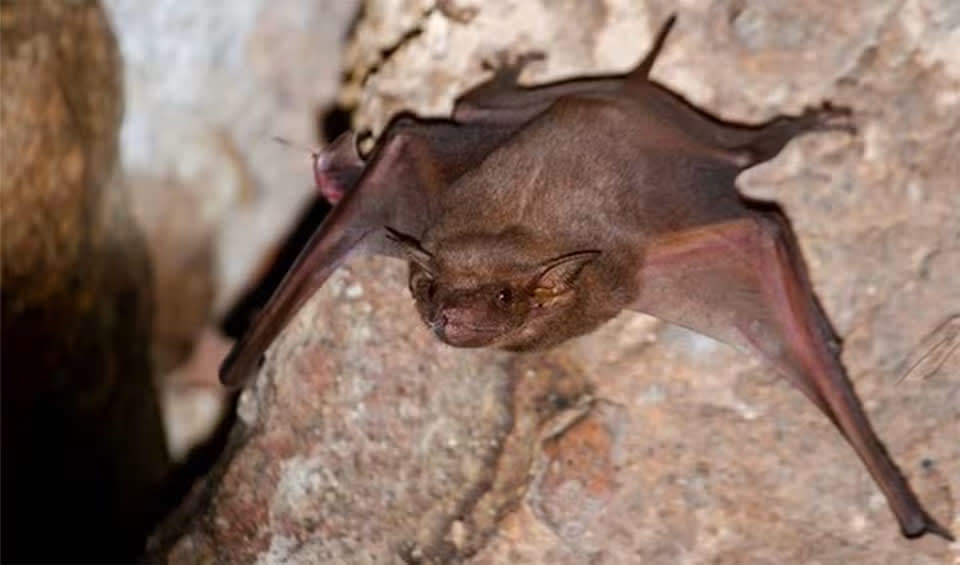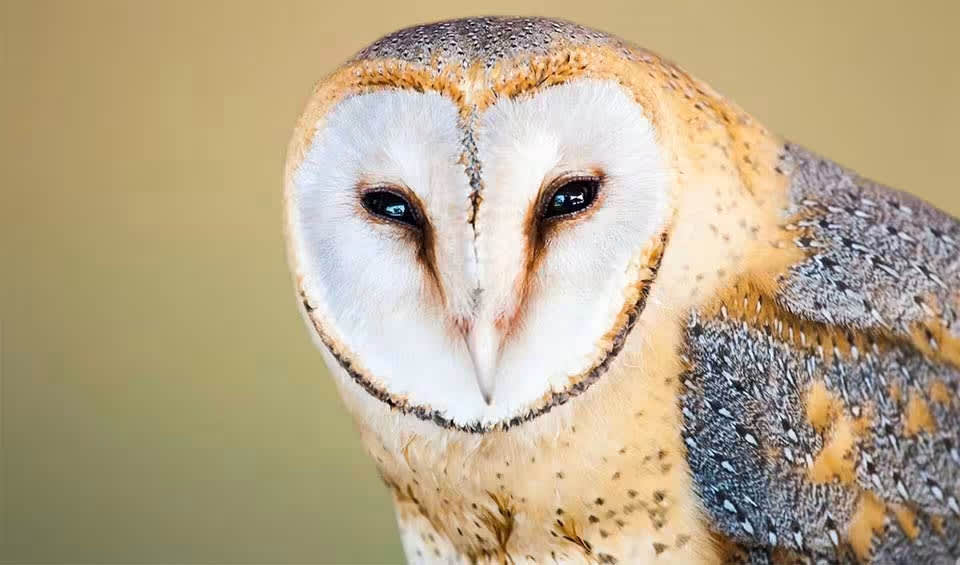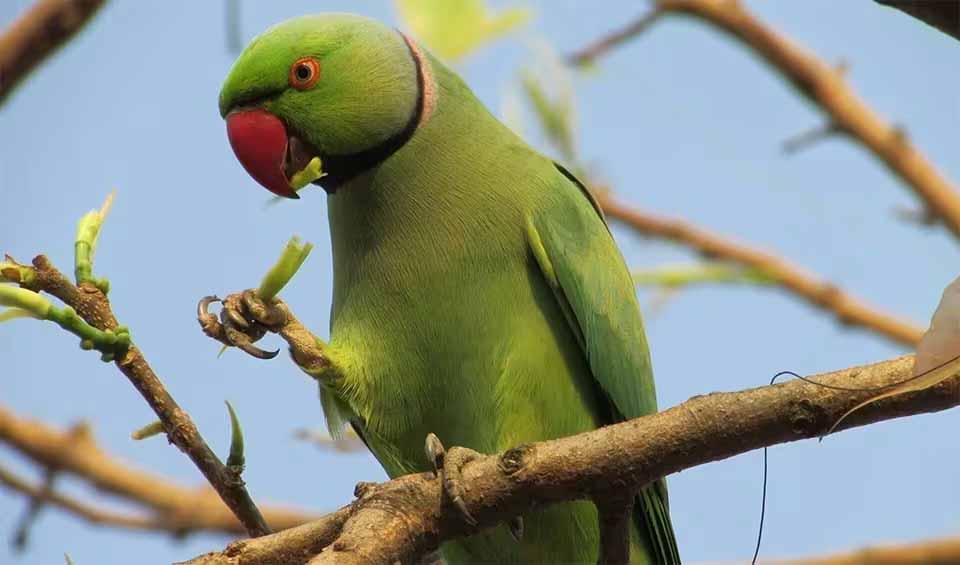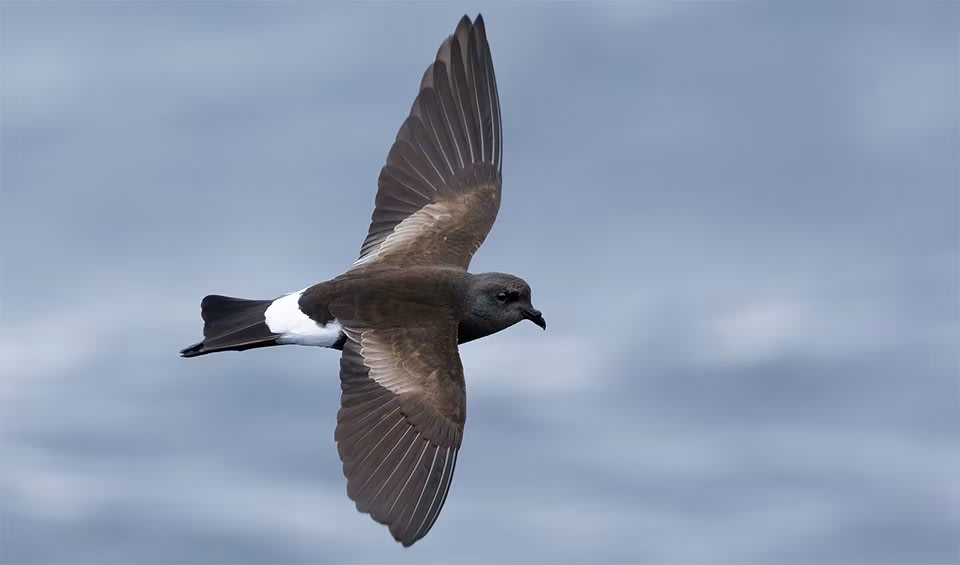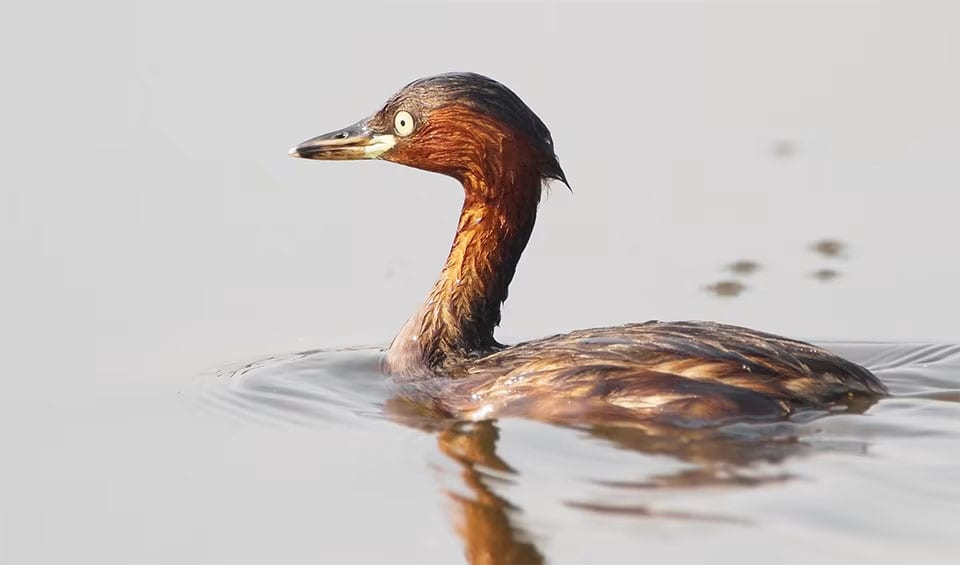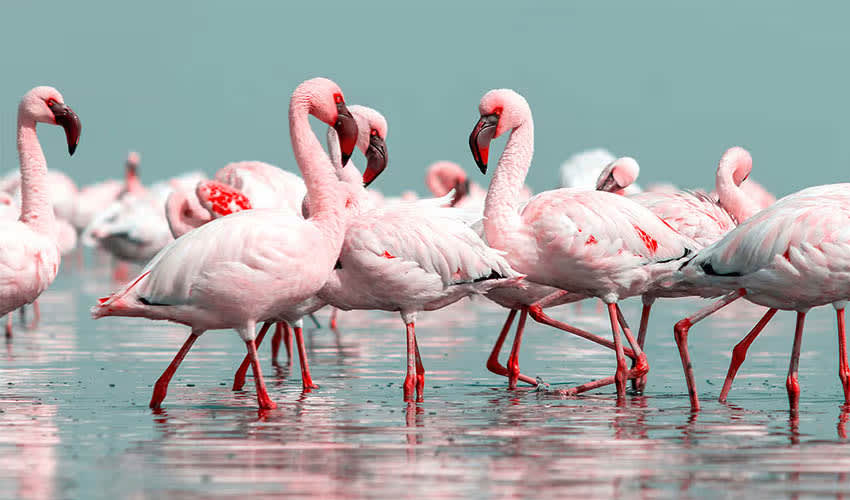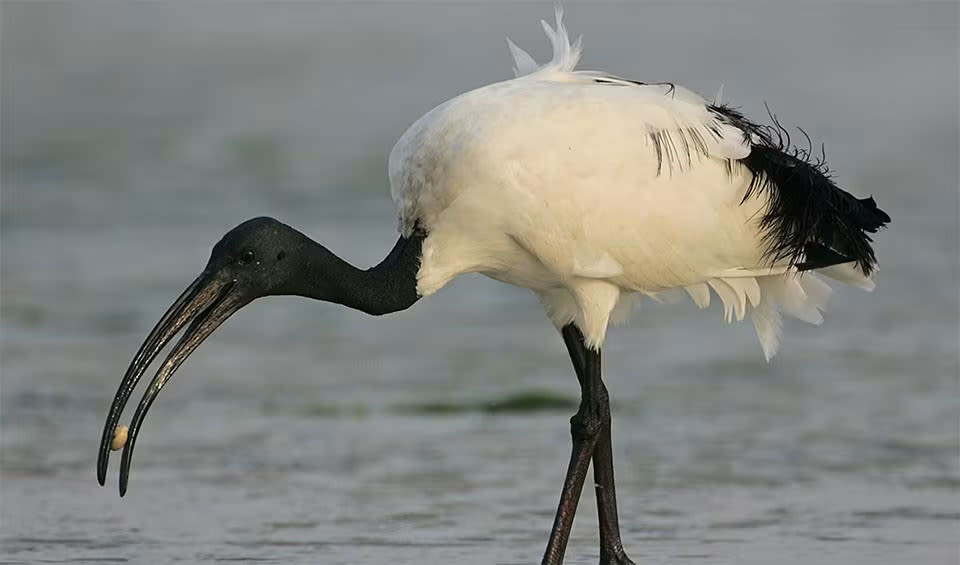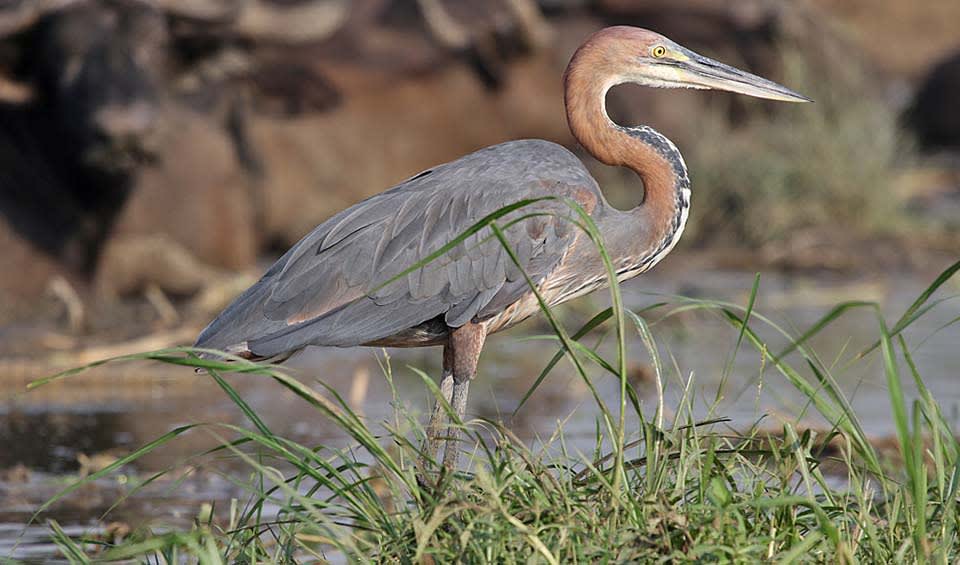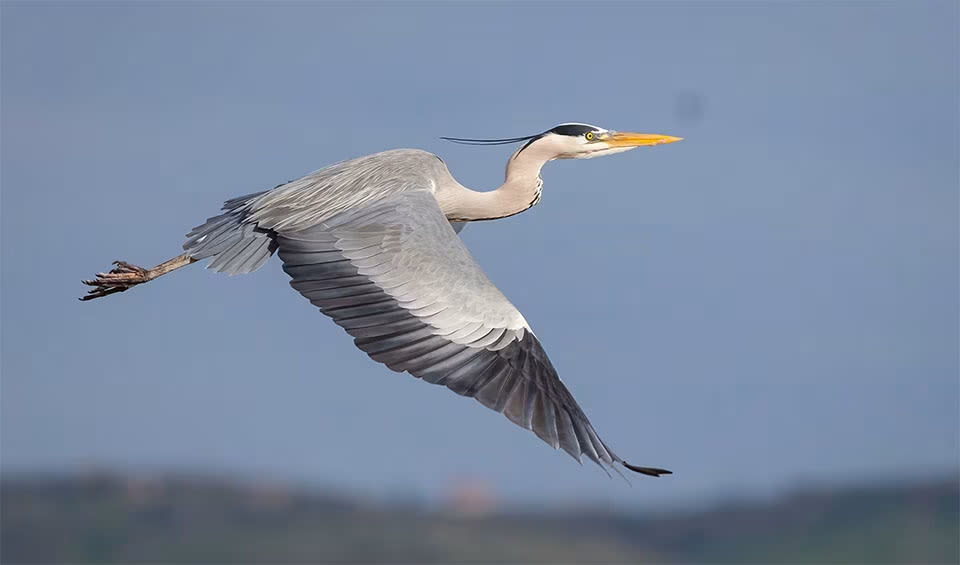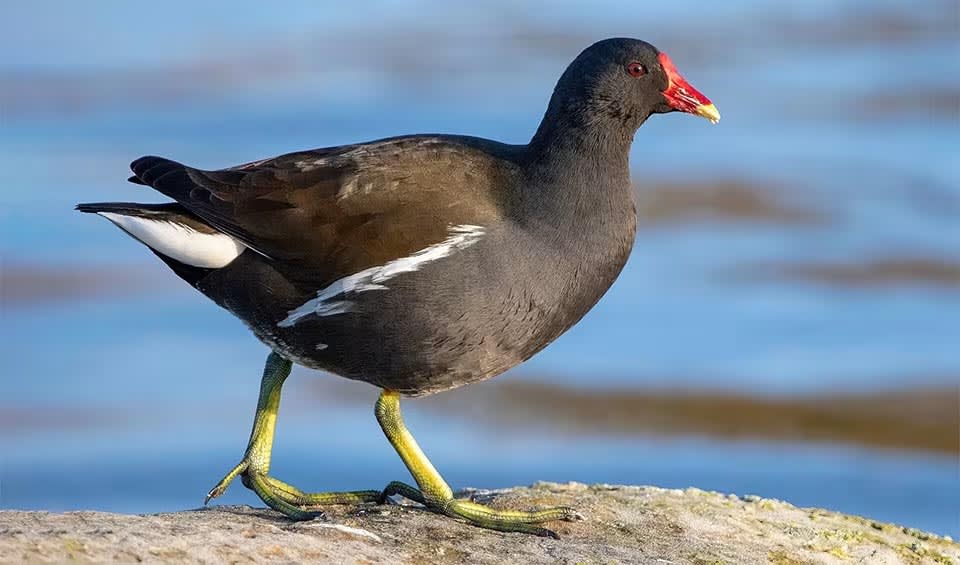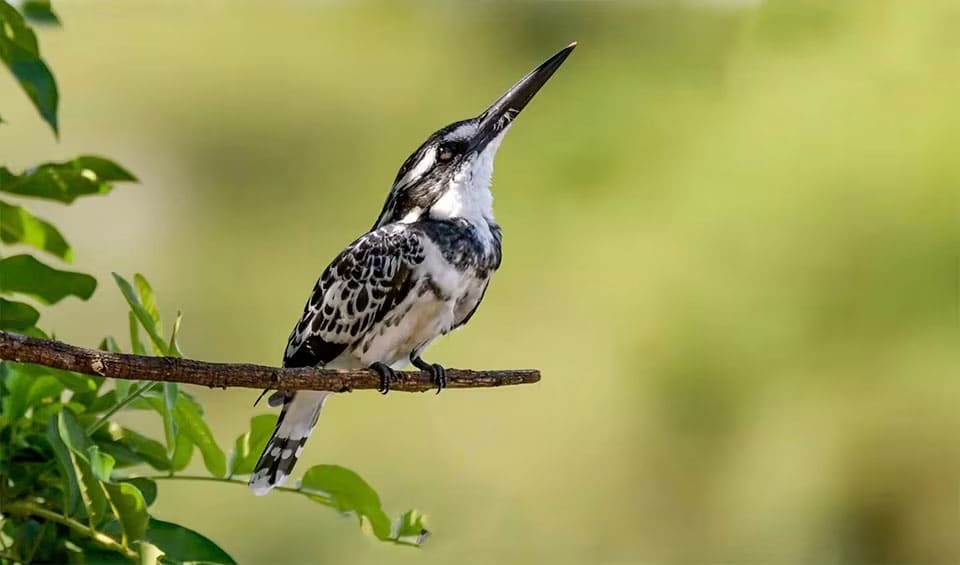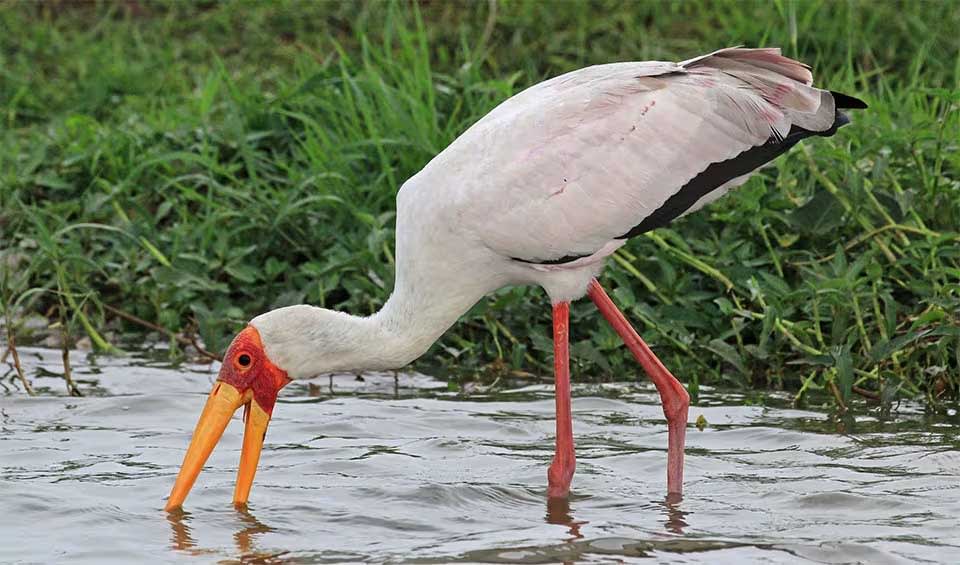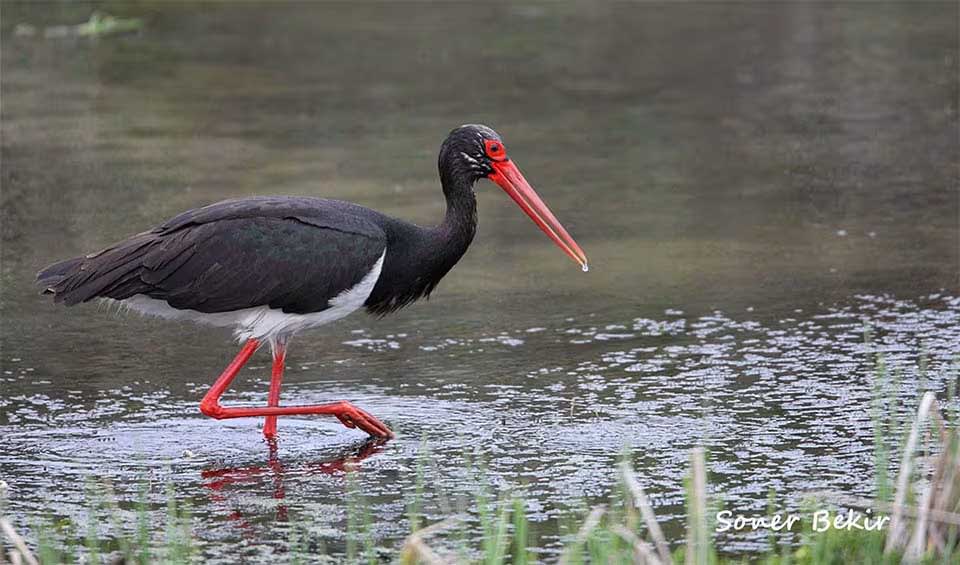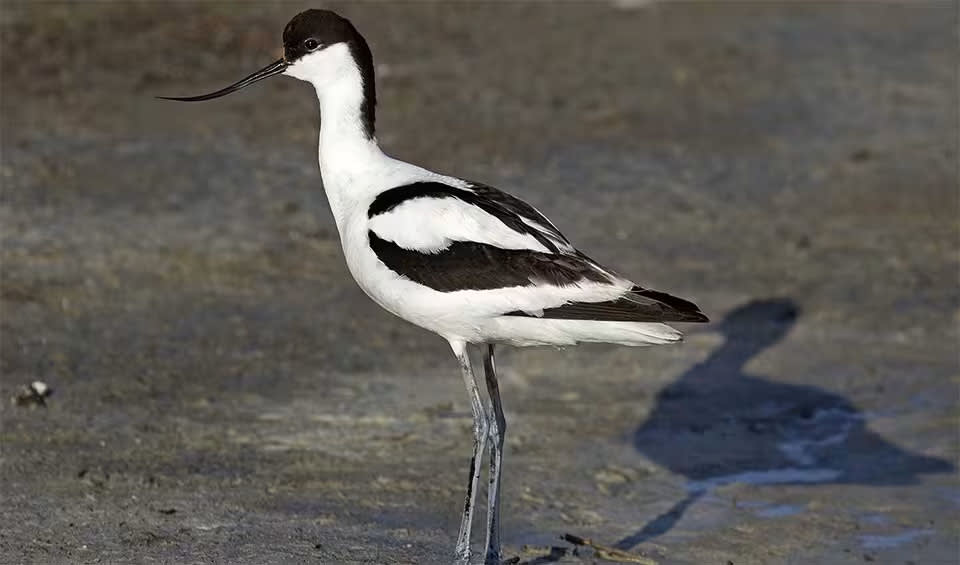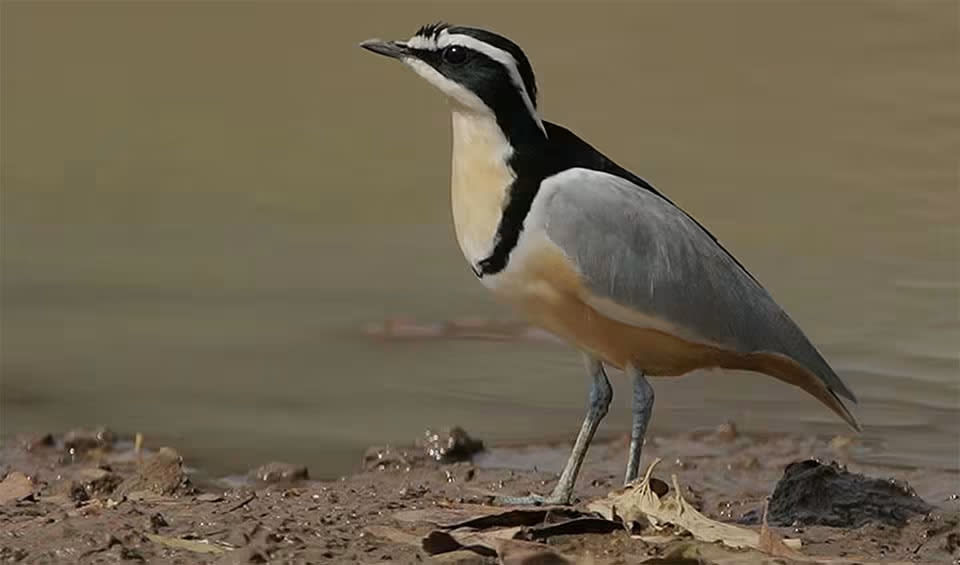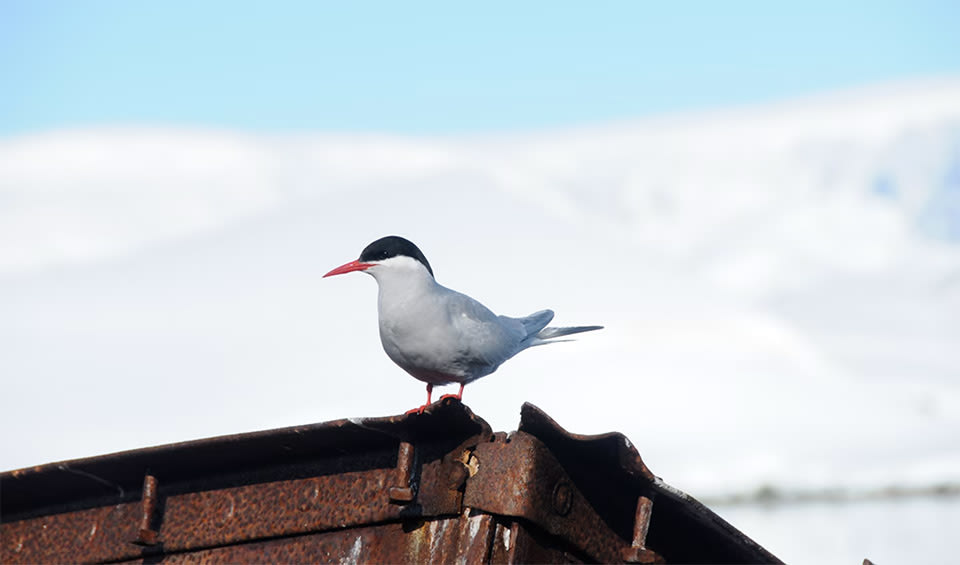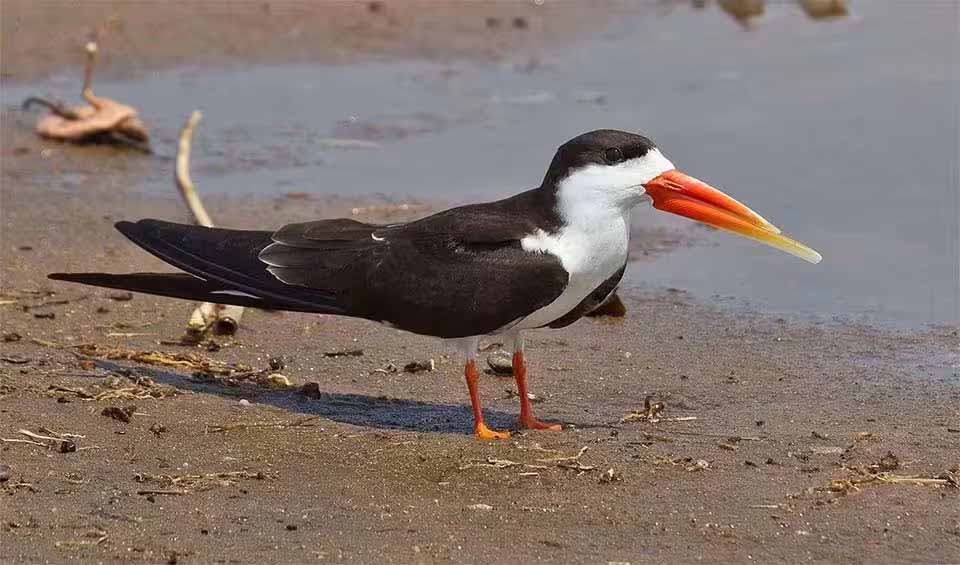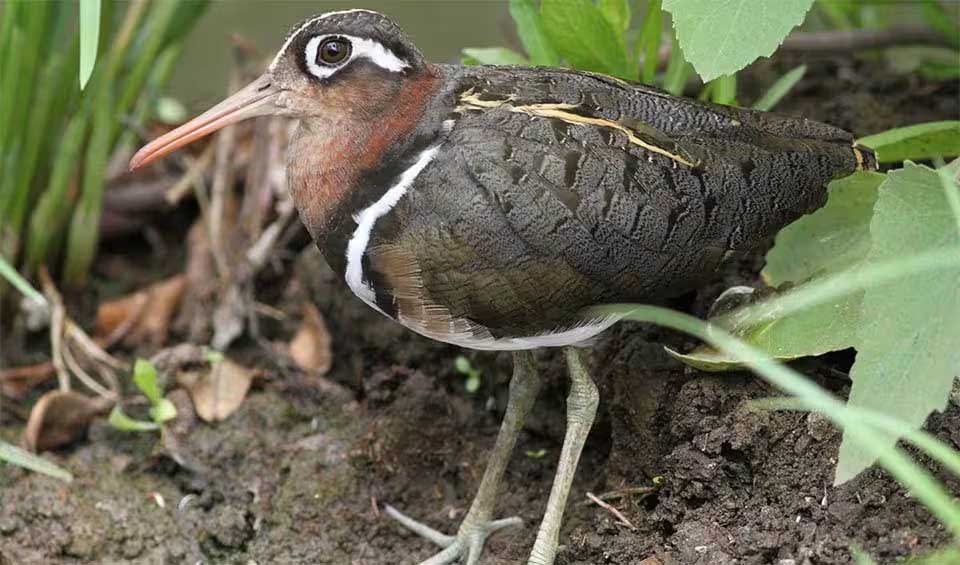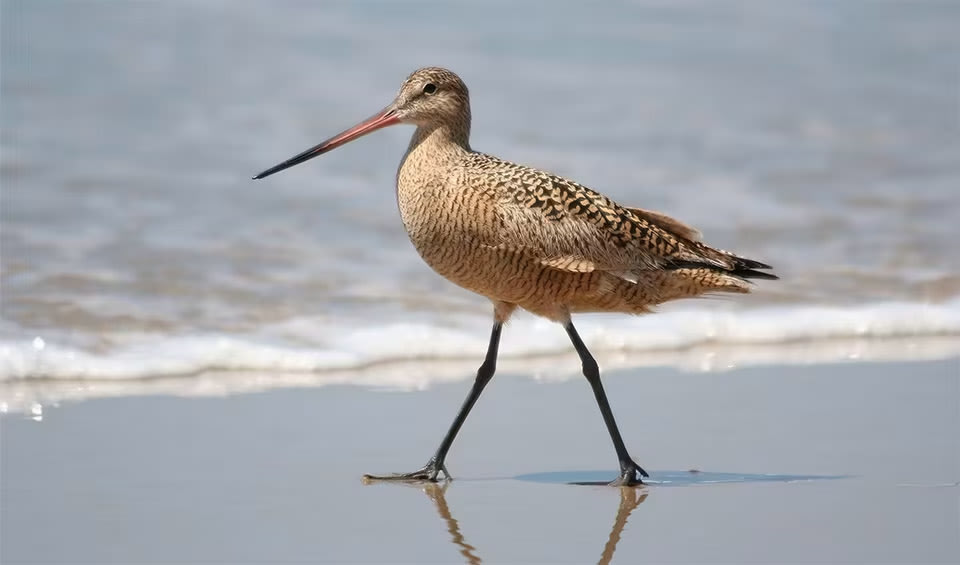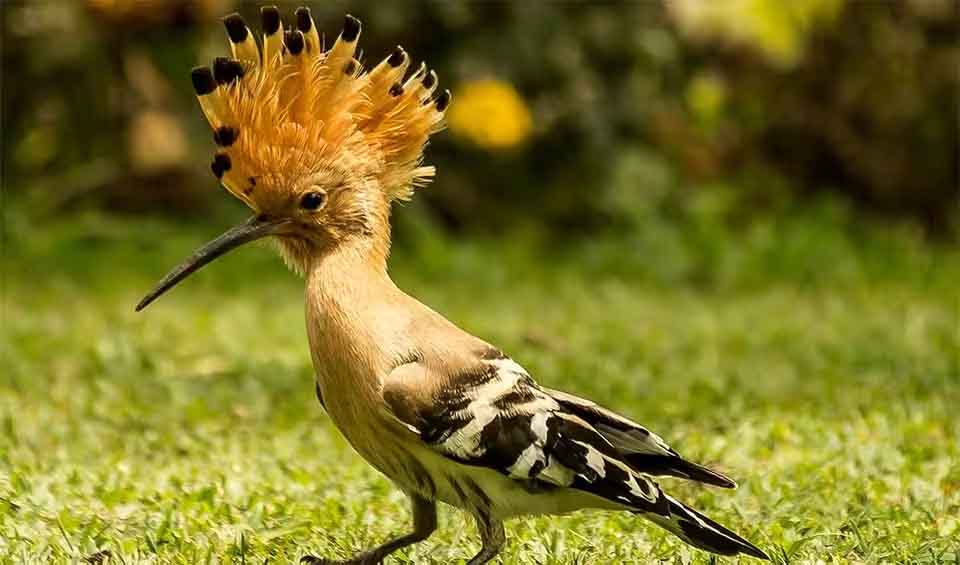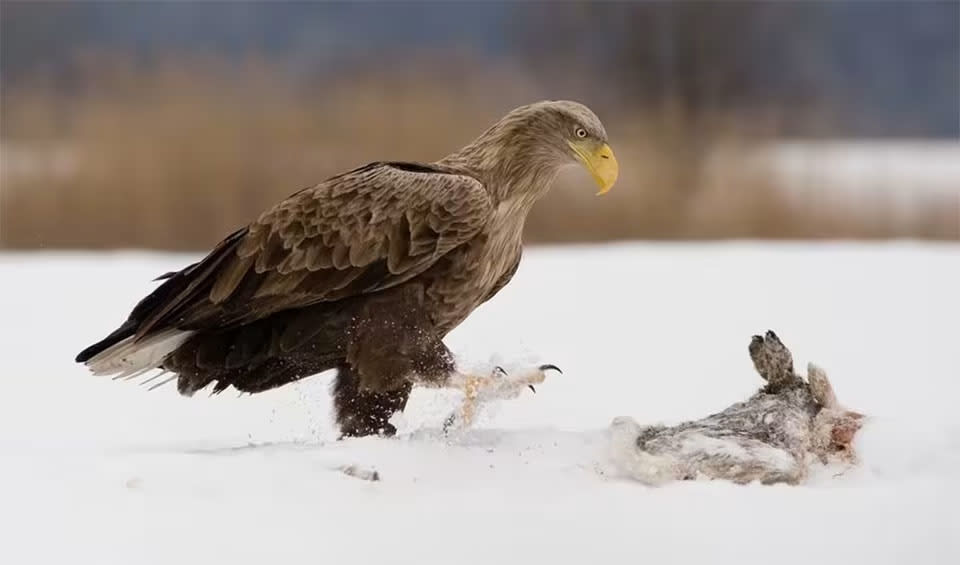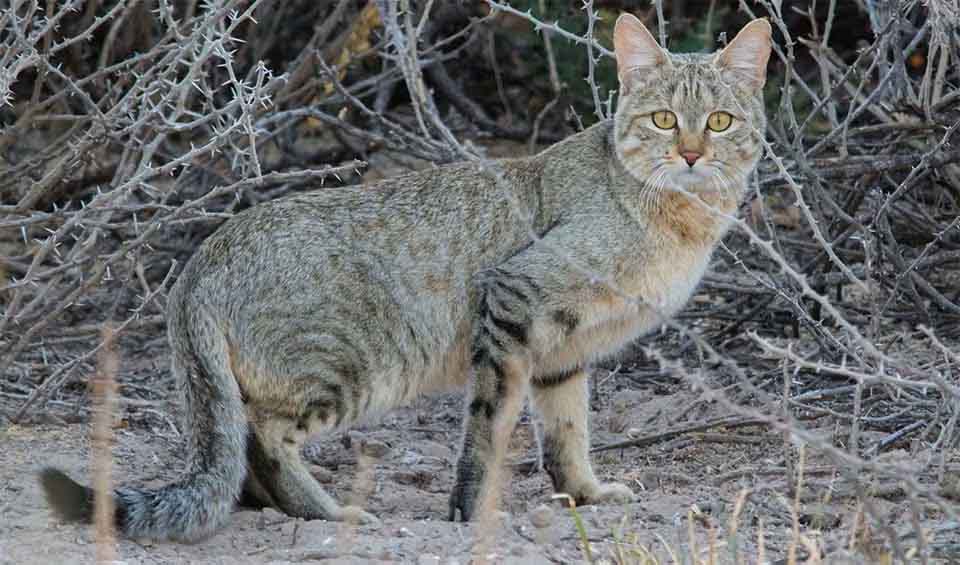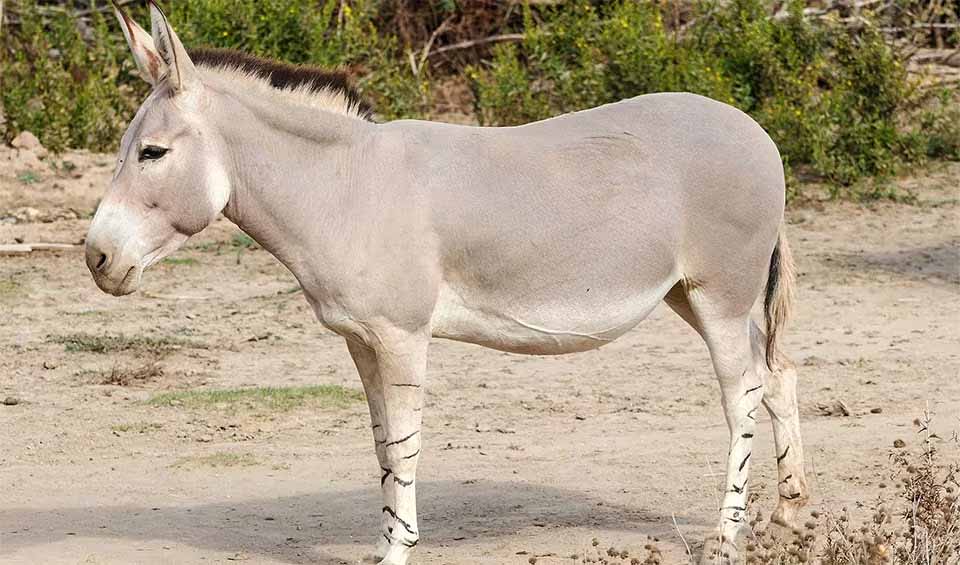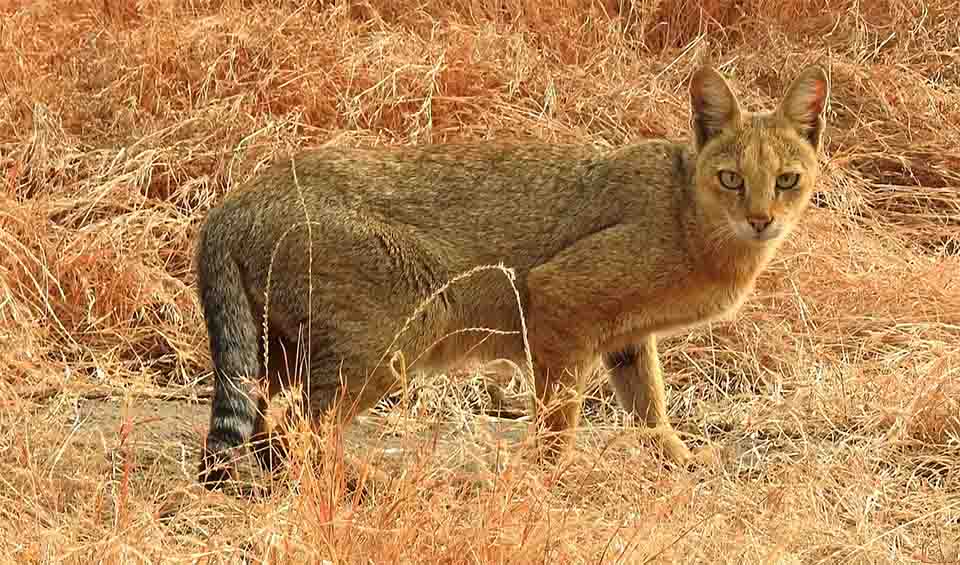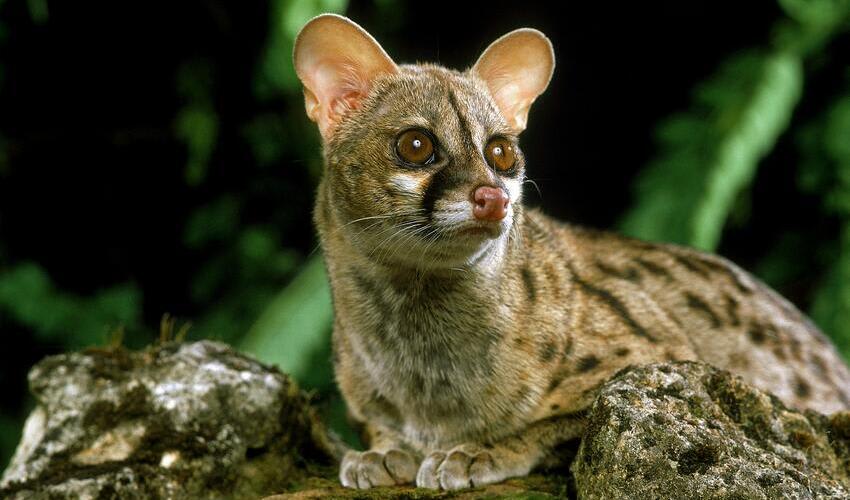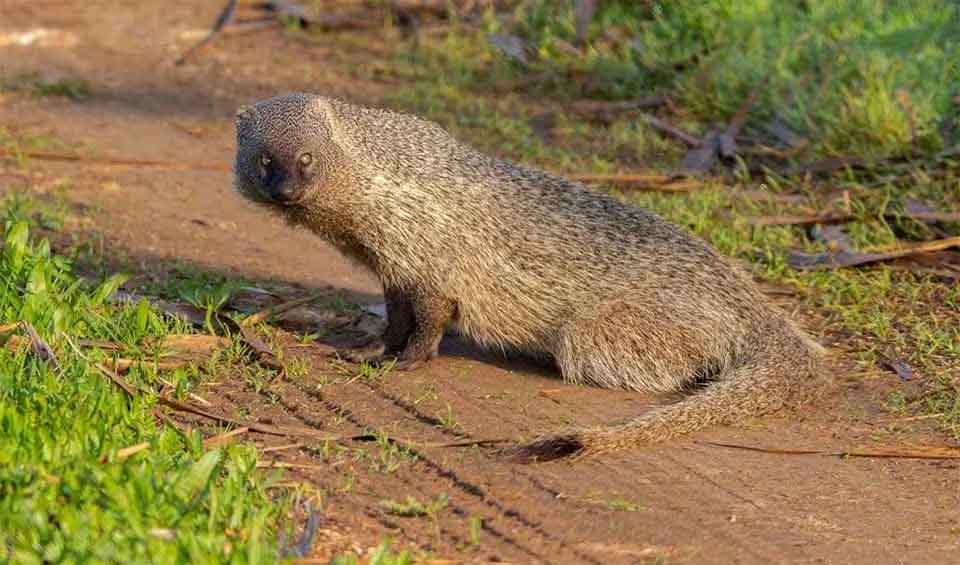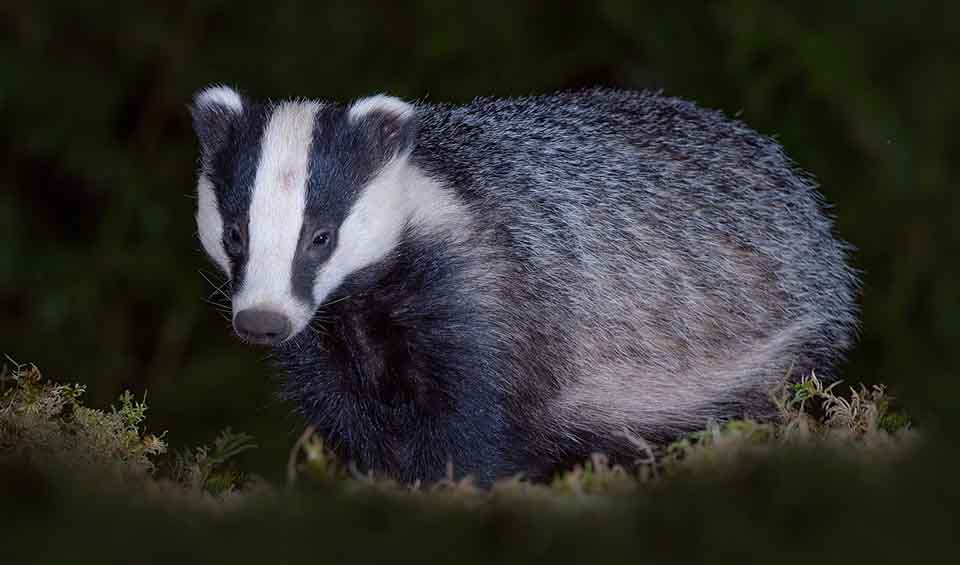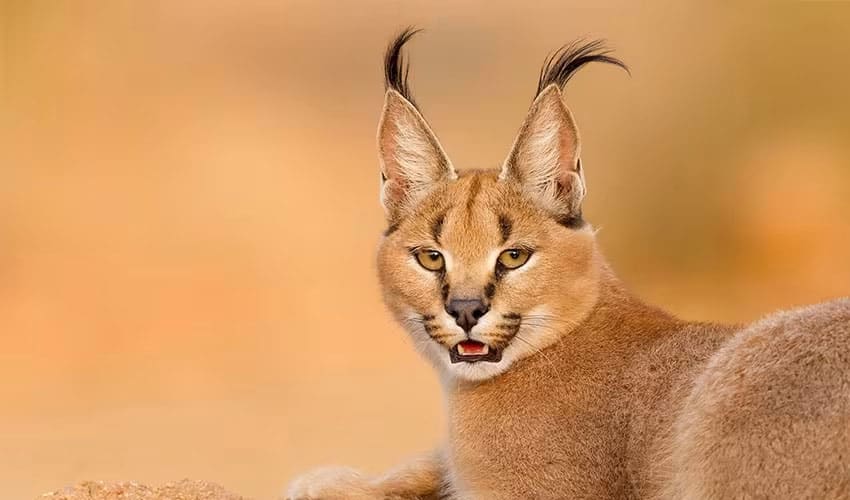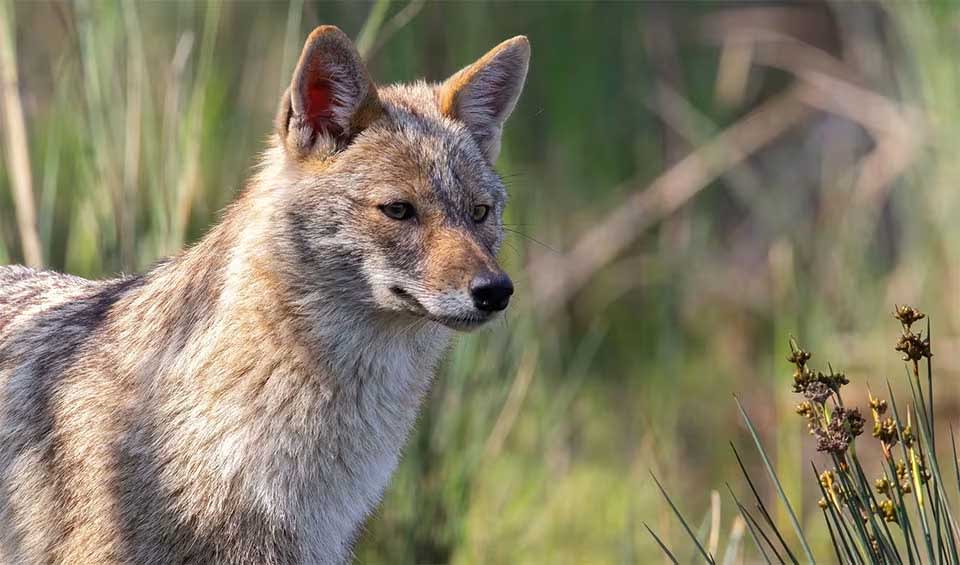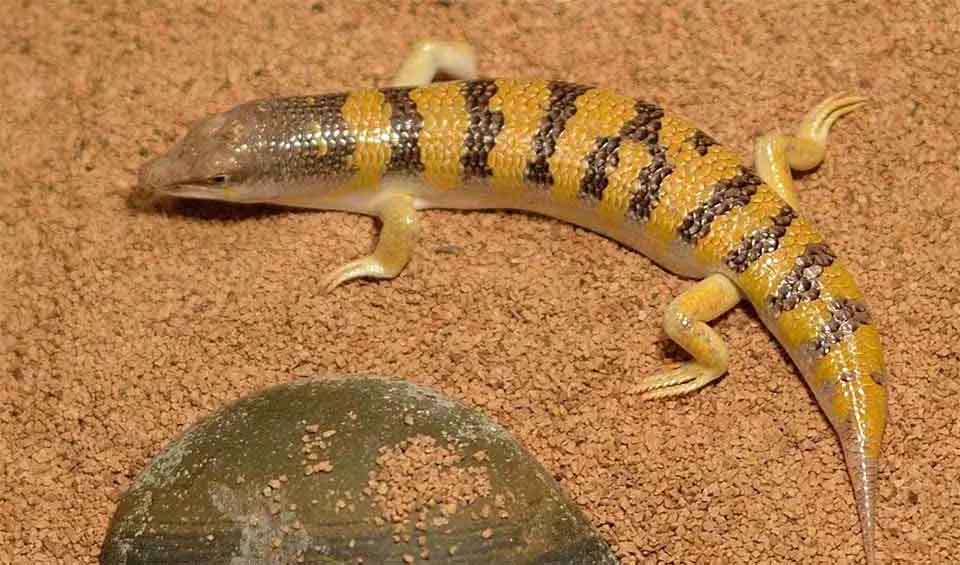Search for Egypt
Ruff
Looks ordinary—but transforms into one of the most extravagant birds during breeding season
Sand tiger shark
May look like villains, but in truth, they’re peaceful giants of the sea
Desert hedgehog
Surprisingly dainty, weighing less than a can of soda
Fat sand rat
Their “fat” name is more about their body shape than their actual health in the wild
Greater Egyptian jerboa
Has a “magical” ability to vanish with a leap
Rüppells vulture
Once found flying 11,300 meters (37,100 ft) high, sadly, this was more of an accident than a discovery
Sacred scarab
Turning waste into new life for the soil
Brown rat
Can squeeze through shockingly small gaps if their head fits
Nubian ibex
Newborns are fully developed and capable of running and jumping within a day after their birth
Scalloped hammerhead
Their skin actually darkens, just like a sunburn!
Reed cormorant
Despite its short stature, it’s a strong and fast flier
Common chameleon
A reptile that can mimic the hues of nature and capture its feast with a tongue that’s like a thunder
Ruddy shelduck
Has the body of a duck, neck of a goose, and voice of a goose having a bad day
Hamadryas baboon
In ancient Egypt, they were associated with the god Thoth
African grass rat
They don’t live alone—colonies can have multiple burrows connected like a mini rodent village
Ruddy turnstone
They flip the script — literally!
European turtle dove
The only long-distance migratory dove in Europe
Wood pigeon
Timid by nature, often flying off at the slightest sign of danger
African grey hornbill
One of the more subtly beautiful members of the hornbill family
Black-crowned night heron
One of the most widespread and adaptable herons in the world
Long-eared hedgehog
One of the fastest runners among hedgehogs
Steppe eagle
The treasured bird of Saladin, the first Sultan of Egypt
Dice snake
A big, harmless snake that likes to live near freshwater
African softshell turtle
Instead of a bony shell, it has a flat, leathery covering that helps it glide smoothly through the water
Greek tortoise
The mosaic-shelled marvel of the Mediterranean
Scimitar oryx
Named after the long, curved shape of its horns — which resemble a scimitar sword
White-tailed mongoose
One of its favorite snacks? Beetles and other crunchy bugs!
Common ringed plover
This bird taps its feet to imitate rain to make the prey reach the surface
Saker falcon
Their keen vision enables them to scan vast landscapes, identifying small movements or potential prey items even from high altitudes
Red-footed falcon
Their favorite snack? Large insects like locusts and dragonflies
Cape hare
Has large eyes that could cover a field of 360o to survey their surroundings before they take a nap
African darter
African darters or ‘snakebirds’ are expert underwater fishermen equipped with stealth, diving skills, and a spear-like bill
Mountain gazelle
When running, they employ a playful and energetic bounding leap, which is aptly referred to as “pronking” or “stotting”
Little tern
Renowned for their spectacular aerial displays during courtship, including steep dives and intricate flight patterns
Common blackbird
Arguably among the most beautiful songbirds in the world — they enjoy singing after a rain shower
Common crane
The flocks of this social and gregarious bird are fond of migration, flying over the horizon and creating a V-shaped formation
Levant water frog
A fully aquatic frog that spends its entire life in water, rarely coming to the surface
Arabian oryx
A desert icon, stands tall, thriving in the sand – truly born to be wild in their extreme habitat
European roller
Loves trees! Only member of its family breeding in Europe
Eurasian oystercatcher
The masters of catching oysters, clams, and cockles
European starling
Brilliant mimics, they can copy bird calls and even human-made sounds like car alarms and ringing phones!
Lesser black-backed gull
A common sight in coastal regions throughout the Northern Hemisphere
Rhim gazelle
Master of conserving energy; it will rest in the shade to avoid wasting energy and overheating
Ornate mastigure
Often a mix of bright colors like yellow, orange, green, and blue, arranged in bold stripes or spots
Bateleur
One of the easiest birds of prey to identify from a distance
European goldfinch
Can hang upside down while feeding!
Red-rumped swallow
Amazing flyers — they can even drink water while they’re flying!
Common pochard
Can dive down to the bottom of a lake and rest there, safe from predators!
Eurasian skylark
They might not look like much, but they have an incredible talent: singing!
European pied flycatcher
Males are particularly eye-catching with their black and white plumage, looking like they’re wearing a little tuxedo
European Robin
Can be quite friendly and will often come close to humans, especially if they’re offered food
Great white pelican
Underneath this colorful beak, there’s a hidden surprise – a built-in net for scooping up a delicious lunch!
Pink-backed pelican
Mostly pale grey or white, but when the light hits just right, you’ll see a rosy-pink blush across their back and wings
Northern bald ibis
Considered a sacred bird by ancient Egyptians, often depicted in their art and mythology
Eastern imperial eagle
Its imperial imagery and fierce demeanor have made it a symbol of power and nobility throughout history
Barn swallow
Most common and widely distributed swallow globally
Demoiselle crane
The smallest of all the crane species and is known for its elegance and grace
Northern lapwing
Very active and noisy, with a loud, piercing call that sounds like “pee-wit”
Cyprus warbler
Its unique song is a cheerful, bubbly melody that’s a delight to hear
Common nightingale
Often called the “singer of the night,” it produces a complex and beautiful melody that has captivated people for centuries
Lesser grey shrike
Have been observed remembering the locations of their impaled prey and even using tools to help them catch food
Great hammerhead
The biggest of all the hammerhead sharks, with a massive head that looks like a giant, flat hammer
Pantropical spotted dolphin
A champion swimmer and a social butterfly of the warm seas
Brown noddy
They bob their heads up and down as they fly, which is actually how they earned the nickname “Noddy”
Common bottlenose dolphin
Known for their acrobatic leaps, twisting and turning gracefully as they jump completely out of the water
Mediterranean common dolphin
Often seen riding the bow waves of boats or performing acrobatic leaps out of the water
Savignys treefrog
Also known as the Lemon-yellow tree frog, the Middle East tree frog
Mute swan
Known for their graceful movements and the distinctive “S” shape of their neck
Whooper swan
Very loyal partners! Once they find a mate, they usually stay together for life
Tawny eagle
Often seen as a symbol of strength, freedom, and keen vision in many African communities
African fish eagle
With its striking appearance and distinctive call, it is often referred to as the “voice of Africa”
Black crowned crane
In some regions, they are regarded as messengers of the gods or as symbols of rain and fertility
White-headed duck
Their stiff, upright tail feathers aid them in swimming and diving
Water buffalo
The “living tractors of the East”—vital in traditional agriculture, particularly in Asia
Saharan horned viper
Despite its fearsome appearance, it is a shy and reclusive creature that would rather hide than confront a threat
Little egret
During breeding, they transform with elegant white plumage, adorned by decorative plumes on the head, neck, and back
Egyptian goose
They were commonly depicted in art from ancient Egypt
Eurasian blackcap
The males, in particular, produce a rich and intricate song that contributes to their charm
Common redstart
They consistently display a restless demeanor and exhibit a distinctive, tail-trembling behavior
White wagtail
Holds cultural symbolism in some societies, representing good luck
Eurasian kestrel
Adaptable raptor known for its hovering hunting technique and striking appearance
Graceful prinia
Territorial and defends its territory aggressively against other birds
White-spectacled bulbul
Distinctive facial markings encircling its eyes, from which it derives its name.
Common chiffchaff
Their migratory behavior is often linked to the availability of insects for food
White-throated kingfisher
These birds are quite chatty, and their sounds are like a strong and determined rattling laugh
Schokari sand racer
With lightning-fast speed and a keen sense of smell, this predator easily captures prey in the desert
Tiger shark
They eat almost anything that comes their way – you name it, they’ll try to snack on it!
Desert monitor
Known for their impressive stamina and can travel long distances in search of food and water
Nile monitor
Can deliver a painful bite, tail lashes, and fierce scratches — definitely a reptile to respect!
Rock monitor
One of Africa’s largest and most powerful lizards
Shortfin mako shark
Speed and power embodied, they rule the seas with their sleek bodies and jaw-dropping leaping prowess
Basking shark
Majestic giants of the sea, they peacefully glide through the ocean with mouths agape, filtering the waters for sustenance
Blacktip reef shark
Graceful and stealthy, these reef dwellers navigate the coral maze with finesse, showcasing their iconic black-tipped fins
Oceanic whitetip shark
Opportunistic predators of the open ocean, their aggressive and persistent feeding behaviour strikes fear into the hearts of their prey
Whale shark
Gentle giants of the sea, with mouths wide open to filter the ocean’s bounty
Loggerhead sea turtle
One of the largest and strongest sea turtles in the world
Hawksbill sea turtle
Its slender frame and narrow head bear a beak curved like a hawk’s, earning this marine marvel its name
Emperor angelfish
As it grows older, it undergoes a metamorphosis that is nothing short of extraordinary
Ocellated skink
Stands out with its striking ocelli, or eye-like markings, that adorn its sleek body
Rüppell’s snake-eyed skink
With a captivating blend of agility, striking colors, and a knack for conquering both land and trees
Starred agama
With mesmerizing blend of bold blues, fiery reds, and sunshine yellows, it effortlessly catches the eye of all who cross its path
Sinai fan-fingered gecko
A gecko with bands and spots, and toes that fan like knots
Mediterranean house gecko
Resilient creature that can thrive in human-dominated environments
Eurasian blind snake
A small, burrowing snake that can’t see well but can smell its way to a tasty insect
Large whip snake
Helpful for the ecosystem and agriculture as it reduces the number of pests and other dangerous snakes
Javelin sand boa
Known for its docile and non-aggressive nature
Middle East blind mole-rat
In the hidden depths of the Middle East, they emerge as a captivating underground marvel
Green humphead parrotfish
With a robust body adorned in iridescent hues of emerald and turquoise, it is an underwater jewel that dazzles the eye
Blanfords fox
A balanced diet for a healthy fox: fruits and insects!
African wolf
A genetic mix of 72% grey wolf & 28% Ethiopian wolf was classified as an African variant of the golden jackal until 2015!
Fennec fox
Smallest fox in the world, measuring almost 25 cm (10 in), but has enormous ears that can grow up to 15 cm (6 in)
Red fox
Ladies and gentlemen, please welcome the world’s most widely distributed carnivore!
Rüppell’s fox
Can be easily identified by its larger ears, making it stand out from red and pale foxes
Common kingfisher
Possessed with special visual adaptations to catch fish
Etruscan shrew
Meet the world’s smallest mammal but a fierce predator
Cheetah
Racing to extinction: historically ranging throughout Africa to India, now distributed in small, fragmented populations
African wild dog
85% successful kills! Yet irreversibly waning, it is among the most endangered canids in Africa
Brown bear
The second largest bear, right after the polar bear. Sadly, it well might top the list soon
Leopard
Disappearing graceful shadows, this tree-climber is on the way to extinction
Kuhls pipistrelle
Their population distribution is often associated with human settlements as they are comfortable in both agricultural and urban habitats
Egyptian slit-faced bat
Often called ‘whispering’ bats because their echolocation used to access the area and prey location are low intensity and not strong
Egyptian fruit bat
They hold their food tightly and closely to their bodies while feeding, preventing the food from being stolen by other bats
Crested porcupine
They don’t shoot quills—they let predators do the hard work by detaching them on contact!
Lesser Egyptian jerboa
This ‘mini kangaroo’ leaps up to 3 m (9.8 ft) in a single jump, thanks to its incredibly large hind legs
Naked-rumped tomb bat
These ‘sloppy animals’ tend to have a strong and unpleasant odor due to accumulated wastes in roosts
Trident bat
Highly mobile bats that tend to roost in hundreds to thousands of whatever shelters they can find
European free-tailed bat
Their muzzle has wrinkled lips, which makes them look like a dog’s face, and is commonly called a bulldog bat
Hippopotamus
1.6 ton (1.5 tonne) + 48 km/h (30 mph) = what do you think?
Great cormorant
Due to their adaptability and willingness to migrate to more favorable habitats, great cormorants are found worldwide
Common ostrich
Arabian ostrich, 1 of 4 subspecies, was hunted to extinction in mid-20th century
Barn owl
The most cosmopolitan of owls with home ranges extending across the globe
Little owl
Aptly named after the goddesses of wisdom and war, little owls have lived alongside human civilizations since 500 BC
Pin-tailed sandgrouse
This bird looks like a modern mosaic art-piece
Rose-ringed parakeet
If you ever forget the tune of a song, don’t worry; this bird has your back
Wilsons storm petrel
This species is found in all world oceans except the north Pacific Ocean
Leachs storm petrel
These petrels stylishly ride the ocean waves like they own the winds
Little grebe
This cute and small bird is one of the most elite hunters below the water’s surface
Syrian woodpecker
One of the only birds that can drill a hole in the hardest of wood
Lesser flamingo
This bird holds a Guinness book of world records to its name
Greater flamingo
The iconic and elegant bird with a curved pink bill is known for turning heads
Red-billed tropicbird
Professional marine forecasters to optimize breeding success and prey availability
Eurasian spoonbill
This bird is unmistakable for its namesake, spoon-shaped bill
African sacred ibis
The fossil records suggest that this species has been on this planet for millions of years
Glossy ibis
These birds seem to have lost their way to the beauty pageant
Goliath heron
This large heron is a firm believer in the adage: “Patience is the key to success”
Gray heron
Exhibit powerful flight, with distinctive slow wing beats and an extended neck, defining features during their aerial movements
Great tit
The songbird that occasionally eats bats
House sparrow
The most widely dispersed wild bird
Marsh warbler
One of the best avian vocal mimics
Palestine sunbird
The tiny hovering jewel of house gardens
Eurasian coot
Like those bulging red eyes weren’t scary enough, they eat their innocent chicks when hungry
Common moorhen
Living around smelly brackish marshes is unthinkable, but these birds love their isolated habitat or don’t have a sense of smell
Chukar partridge
The national bird of Pakistan and Iraq is known to improve degraded ecosystems by aiding in the dispersal and germination of seeds
Peregrine falcon
At the speed of over 321 km/h (200 mph), this bird outraces a Formula1 car
Pied kingfisher
The only member of the genus having wide distribution across Asia and Africa is sociable, unlike other members of its family
Yellow-billed stork
As the name suggests, this whitish stork has a bright red face and a distinctively long yellow bill
Black stork
The stork with the widest geographic range
White stork
The folktale bird that brings the babies!
Pied avocet
One of the very few birds with an upturned bill
Black-winged stilt
Elegant long-legged wader, common almost worldwide
Eurasian stone-curlew
One of the bigger waders with a reptilian eye
Crab-plover
This bird has learned how to use a spear and made it an extension of itself
Egyptian plover
The janitors of the bird world
Great skua
Jack Sparrow of the bird kingdom
Arctic tern
This bird can give any cross-country runner a run for their money
Common tern
This bird holds the record of the longest distance flown by any bird in recorded history
African skimmer
Global Warming got nothing on this bird
Greater painted-snipe
Looks no less than a renaissance masterpiece
Black-tailed godwit
The most elegant of all godwit species
Common swift
These enthusiastic travelers can be seen almost worldwide in different seasons
Eurasian hoopoe
Dependable wings and a muscular build. Nope, we aren’t talking about the next Redbull ad campaign
Mallard
This invasive species is the ancestor to most of the modern ducks
Egyptian vulture
A highly intelligent species that is the world’s only tool-using vulture with a long migratory range
White-tailed eagle
Extinct and reintroduced – What’s the story behind these so-called ‘flying barn doors’?
Golden eagle
This majestic brown raptor is most widely distributed eagle species
Western marsh harrier
The yellow-eyed devil
Eurasian sparrowhawk
Better call the ambulance before the Sparrowhawk comes to devour all those who are injured
Common buzzard
They eat just about everything — rabbits, rodents, birds, carrion, earthworms, insects… even beetles get a look-in
Short-toed snake eagle
A magnificent migratory bird with long, broad wings and a short tail that sings in the form of musical whistles
Lappet-faced vulture
The African giant vulture has a wingspan up to 2.80 m (9 ft) wide
Bearded vulture
The only living creature that feeds on bone marrow from carcasses in high and inaccessible mountain areas
Cinereous vulture
Largest soaring vulture in the sky with extremely broad wings that assists an important role in nature as “clean-up” team
Osprey
One of only six land-birds with a cosmopolitan distribution habituating all continents except Antarctica
Levant sparrowhawk
Often chasing each other in the air or amusing themselves by catching and dropping objects like sticks or leaves
Eurasian Griffon
Most social vultures with 12 distinct types of vocalization
Rock hyrax
African rock dwellers that resemble pikas , but are more closely related to elephants!
African wildcat
The direct ancestor of the domestic cat—no wonder why they look so alike!
African wild ass
Able to survive water lose up to 30% of the body weight, and capable of restoring it within 2-5 minutes when drinking water
Lesser white-toothed shrew
Also known as the “musk shrew” due to the strong scent they secrete to mark their territories
Jungle cat
One of the cats that were mummified and put into tombs in ancient Egypt as Egyptians worshipped a cat goddess
Common (spotted) genet
We can rotate our pinnae by 80 degrees!
Egyptian mongoose
Appeared in Egyptian paintings from 300 B.C., it is known as “Pharaoh’s cat” and is considered a holy animal that is housed in temples
Striped hyena
The only hyena species outside of Africa that can go 15km (10 miles) for a meal
Aardwolf
Unlike other hyenas, they do not hunt or scavenge but mainly consume termites
Marbled polecat
Delayed implantation enables them to time the birth for favorable conditions, such as when foods are abundant
Striped polecat
They are also called ‘zorilla’ which comes from the Spanish word ‘zorro’, meaning small fox, but they are not fox
European badger
One of the only predators of hedgehogs, thanks to their thick skin and long claws to get past the vicious spines
Sand cat
During mating, they use bark-like vocalizations as a mating call that sounds like chihuahuas
Caracal
“To put the cat among the pigeons” was phrased on caracals, as they were once trained for hunting game birds for Persian and Indian royalty
Golden jackal
Exceptional hunters, but they can feed solely on grass and survive in the absence of prey
Addax
Spends most of its life without drinking water, deriving enough moisture from its food and dew on plants
Hartebeest
They enjoy a sedentary and lazy lifestyle but run fast if they sense danger
Wild boar
They have an elongated and elastic snout that can be used to dig out roots and bulbs
Leatherback sea turtle
The mysterious diver of the ocean is the largest and only sea turtle without a hard shell and scales
Painted saw-scaled viper
A venomous and aggressive snake with the highest mortality rates in the areas of its occurrence
Sandfish skink
This skink dives and ‘swims’ under the sand
Nile crocodile
One of the most iconic animals of Africa and the second largest reptile on earth
